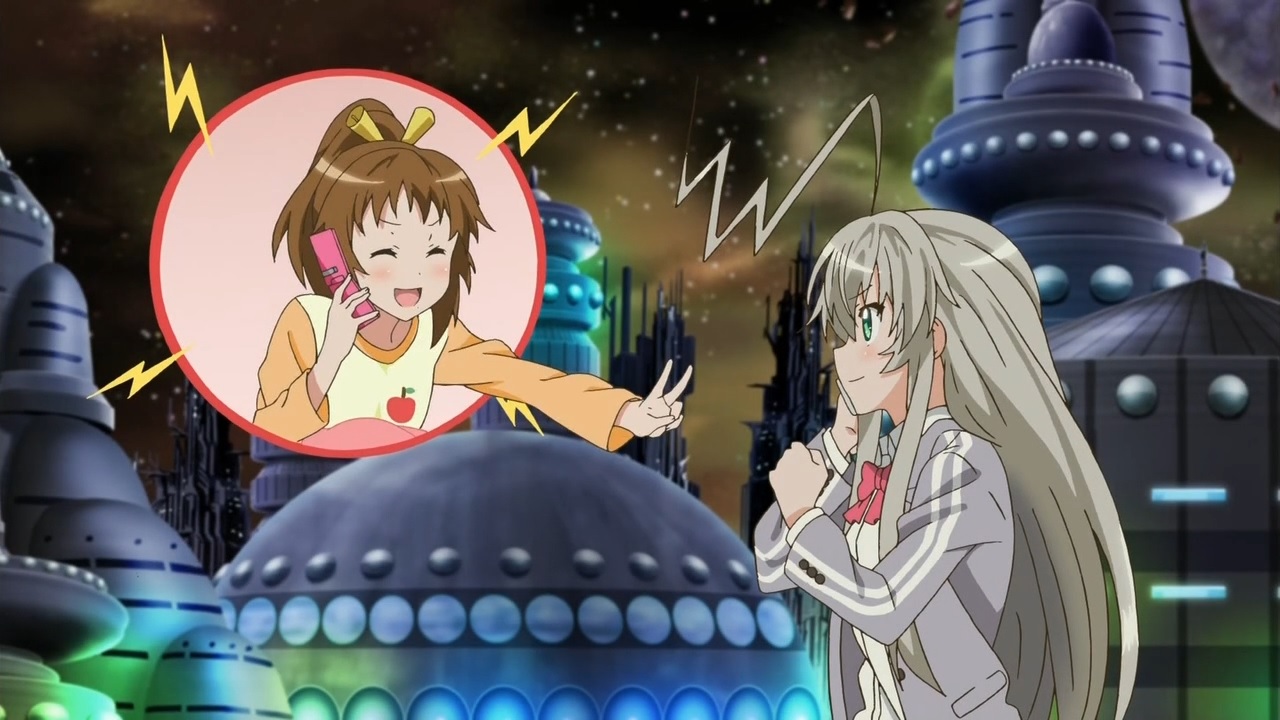Haiyore! Nyaruko-san W Episode 2 References
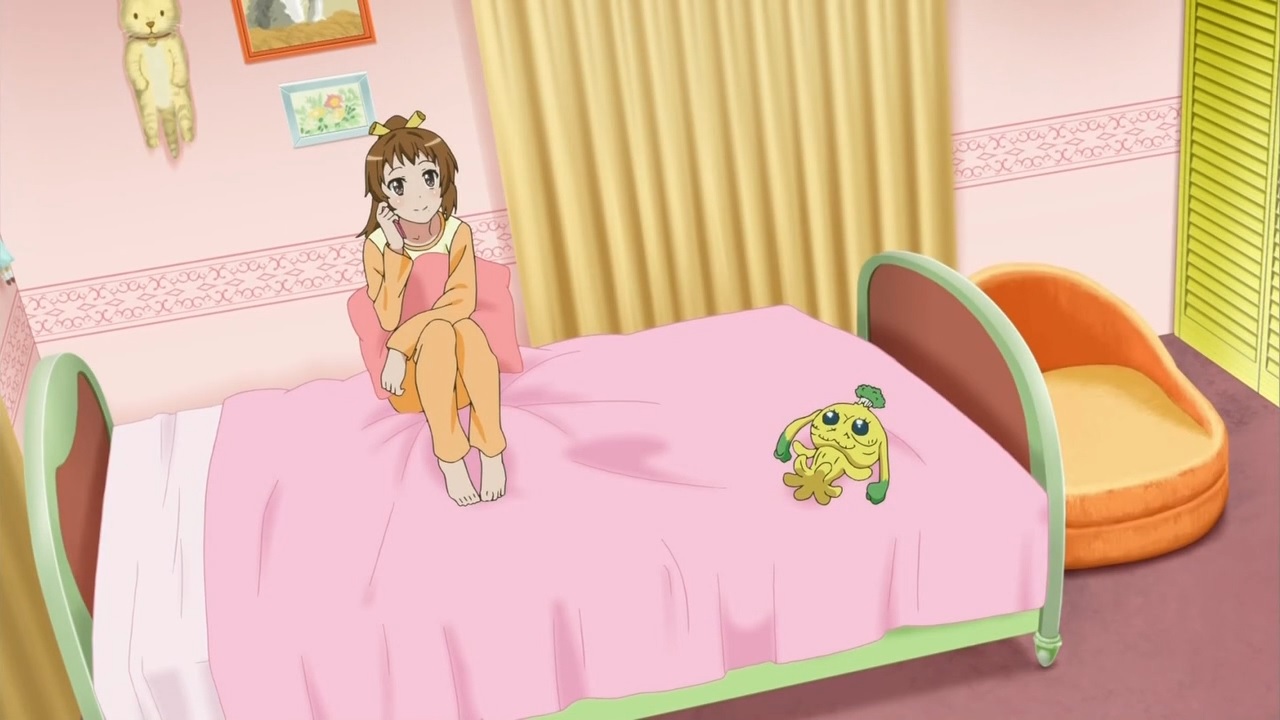
(0:09)
This is the doll that appears on Tamao's bed.
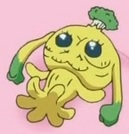
This doll is referencing the Great Race of Yith, a race of creature in the Cthulhu Mythos. A member of the Great Race of Yith is able to travel through time by swapping its mind with the mind of a creature in another time. In "The Shadow Out of Time", a story by H. P. Lovecraft and first published in 1936, it is stated that, "Later, as the earth's span closed, the transferred minds would again migrate through time and space—to another stopping-place in the bodies of the bulbous vegetable entities of Mercury."
* The doll resembles the body inhabited by Yithka (イス香 Isuka), a member of the Great Race of Yith, in episode 10 of the first season of "Haiyore! Nyaruko-san".
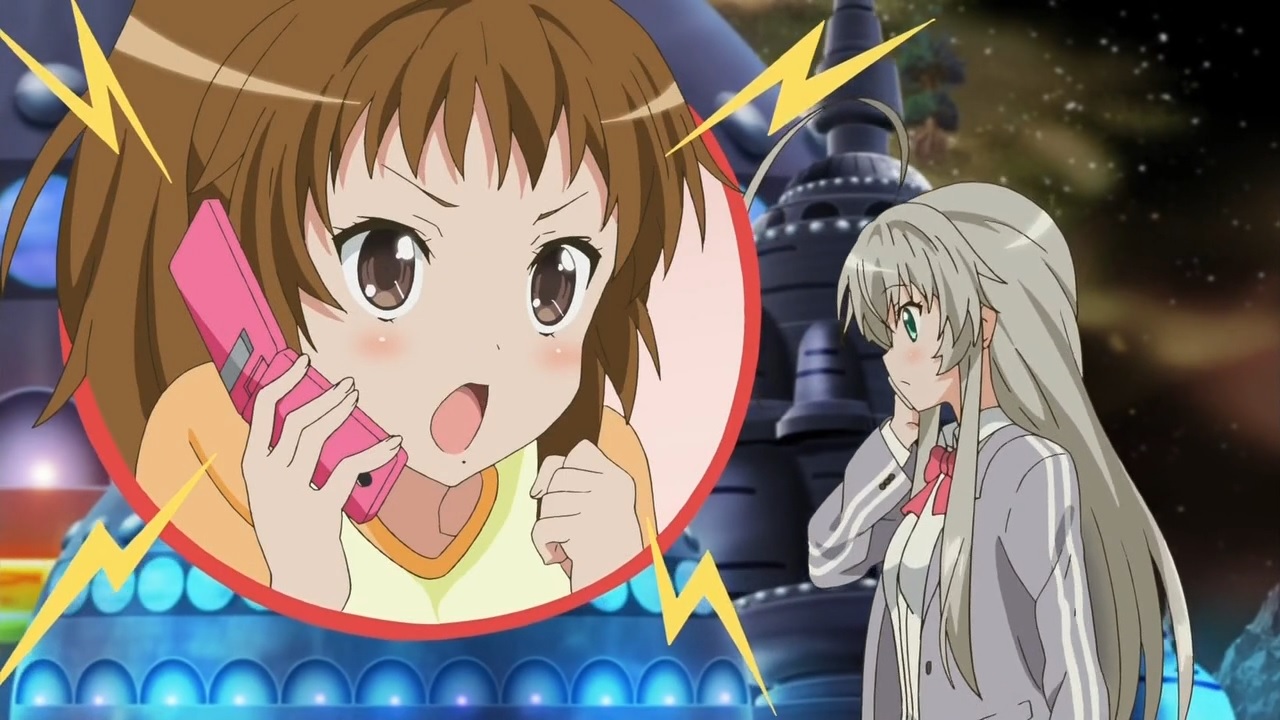
(0:18)
The line at this time goes as follows,
「相手の圧倒的な性能に心奪われるのもまさしく愛、なんだよ!」This is referencing a line said by Graham Aker (グラハム・エーカー) in episode 25 of "Mobile Suit Gundam 00" (機動戦士ガンダム00), an anime series that aired from 2007 to 2008.S1 His line goes,
"Aite no attouteki na seinou ni kokoro ubawareru no mo masashiku ai, nan da yo!"
"A person's heart being stolen by another person's overwhelming power is without a doubt, love!"
「君の圧倒的な性能に、私は心奪われた・・・この気持ち・・・まさしく愛だ!」Graham states that the cause of his obsession to defeat the Gundam is an extreme love that eventually turned into hatred.
"Kimi no attouteki na seinou ni, watashi ha kokoro ubwareta... Kono kimochi... masashiku ai da!"
"My heart was stolen by your overwhelming power... This feeling... is without a doubt, love!"
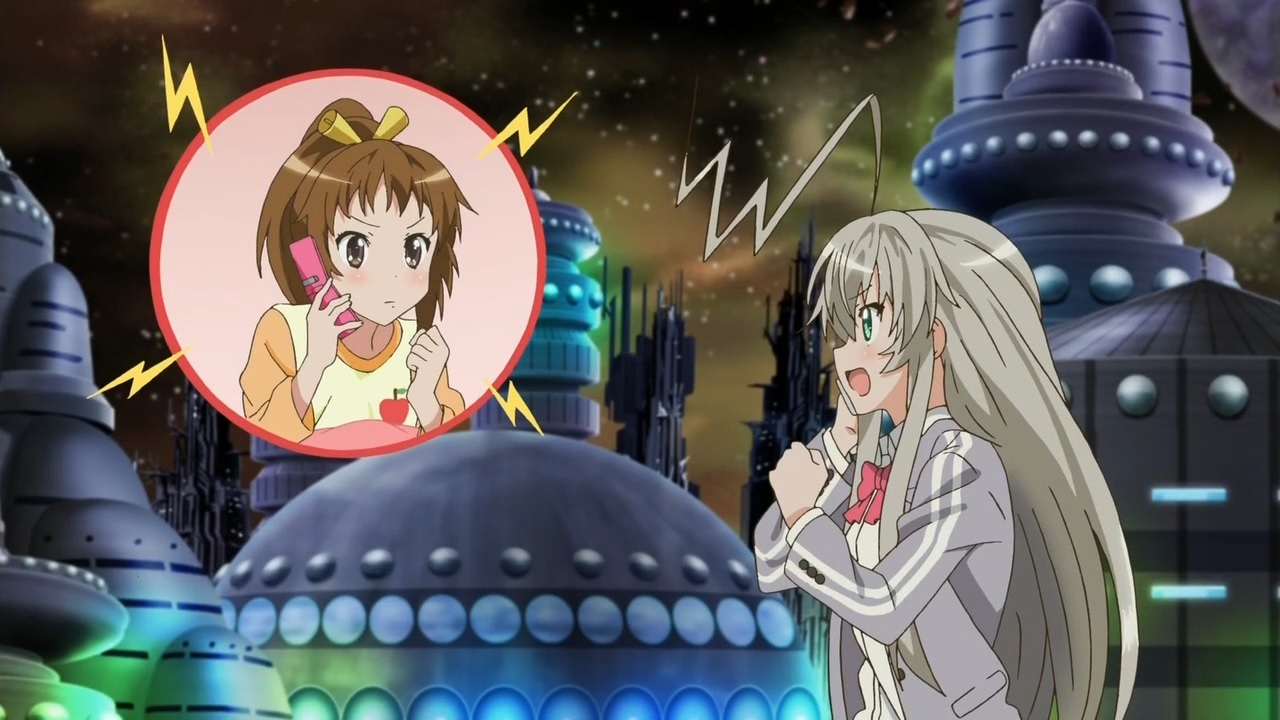
"Tamao, your words were transmitted through Evil God Brainwaves and pierced my heart!" (0:25)
"Nou Jashin Ha" (脳邪神波), "Evil God Brainwaves", is referencing "Mobile Suit Gundam 00" (機動戦士ガンダム00).S2 In the series, there is a term called "Nou Ryoushi Ha" (脳量子波), "Quantum Brainwaves", which is used to describe a special kind of brainwaves that can amplify one's mental abilities, such as spatial awareness and reaction speed.
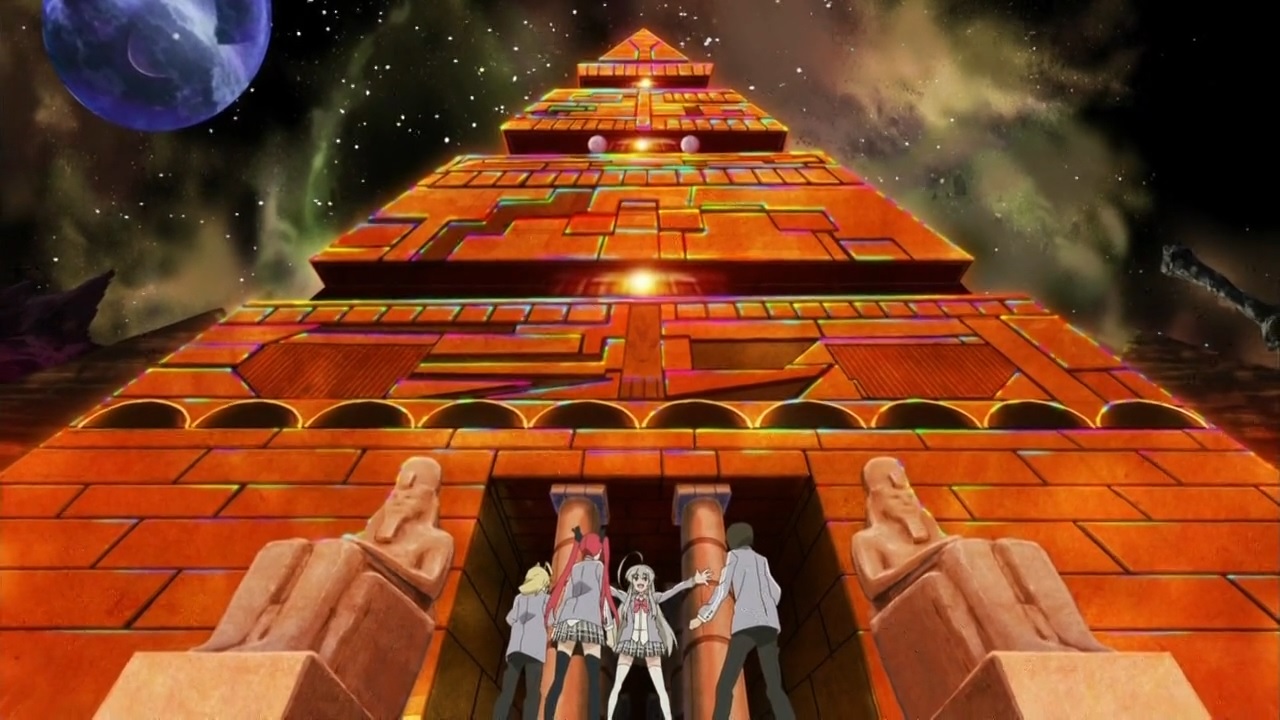
"The Celaeno Library!" (0:34)
Celaeno is a star in the Taurus constellation and is a part of the Pleiades star cluster. In the Cthulhu Mythos there exists a great library on Celaeno, though it is unclear if it is located on Celaeno itself or on one of the planets that orbits Celaeno. In "The Trail of Cthulhu", a book written by August Derleth and published in 1962, the Library is implied to be under the control and domain of Hastur, and contains "books and hieroglyphs stolen from the Elder Gods by the Great Old Ones".
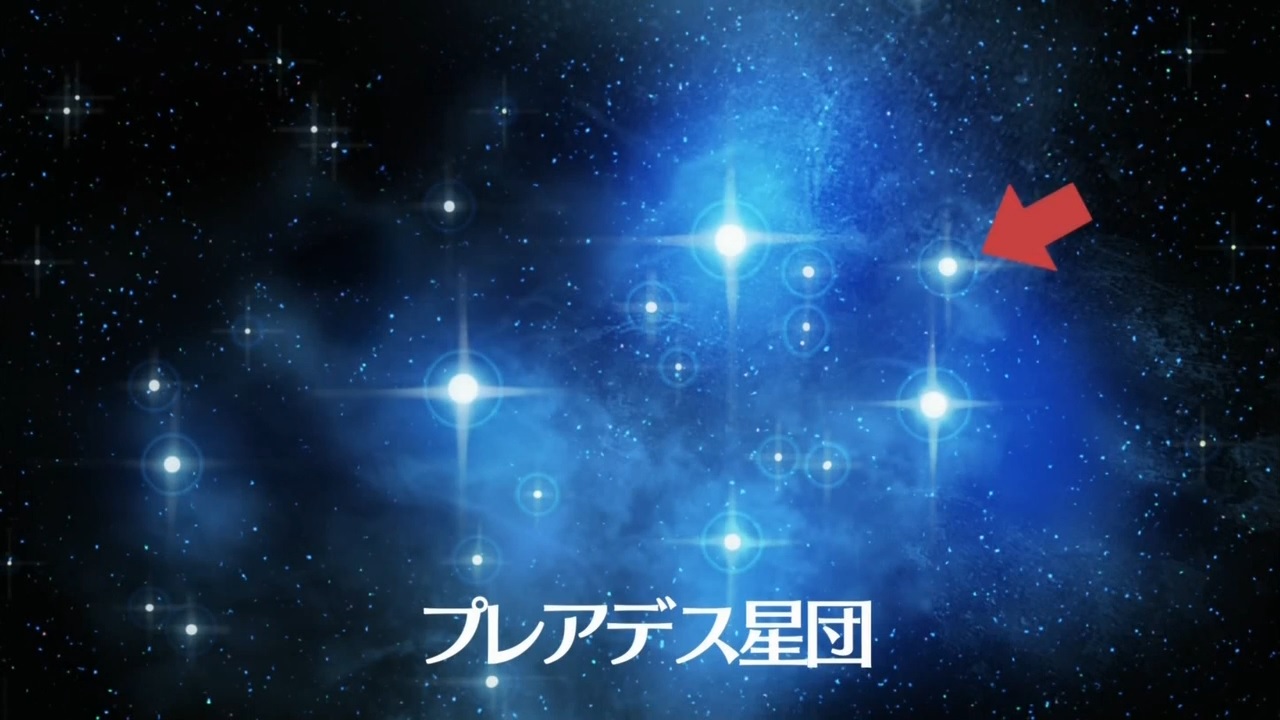
(2:32)
The text says, "Pureadesu Seidan" (プレアデス星団), which translates to "Pleiades star cluster". As mentioned earlier, Celaeno is a star in the Taurus constellation and is a part of the Pleiades star cluster.
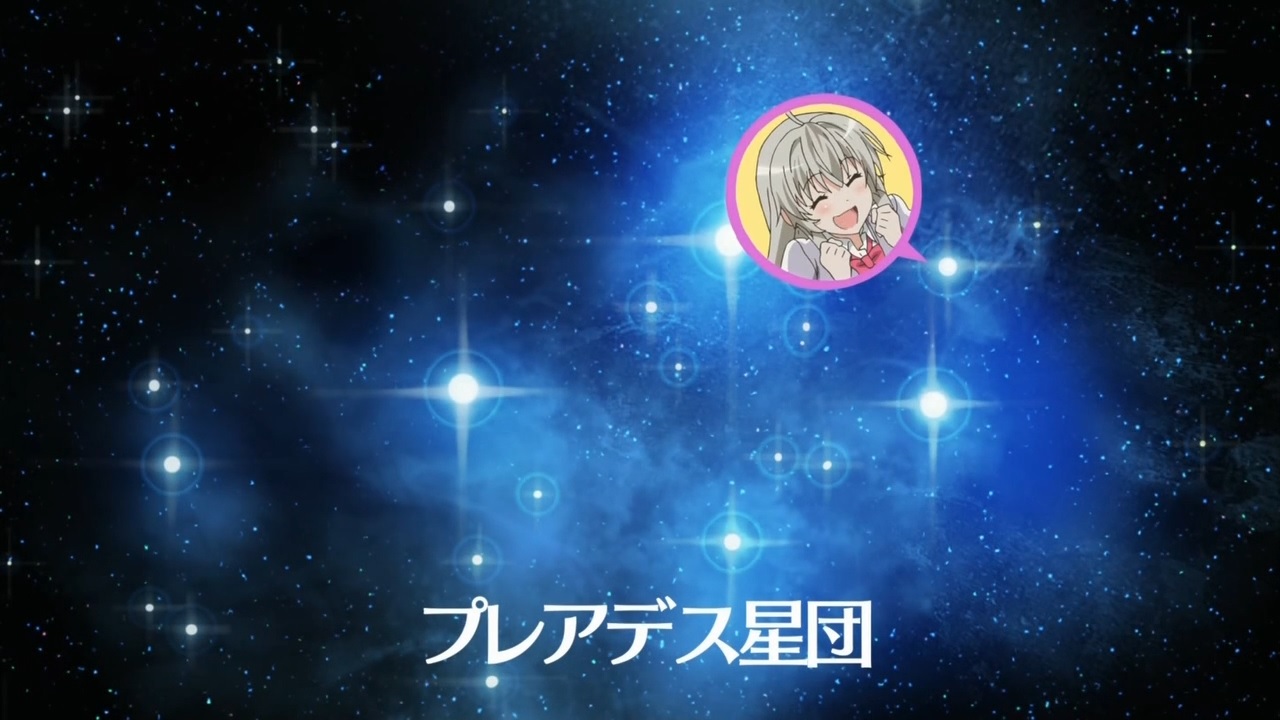
"I'd be lonely if I were by myself." (2:38)
The Japanese line is, "Hitori bocchi da to sabishii de ha arimasen ka" (一人ぼっちだと寂しいではありませんか). This is referencing a line said by Sakura Kyouko (佐倉杏子) in episode 9 of "Mahou Shoujo Madoka Magika" (魔法少女まどか☆マギカ), "Magical Girl Madoka Magica", an anime series that aired in 2011.S1 Her line goes, "Hitori bocchi ha sabishii mon na" (一人ぼっちは寂しいもんな), which translates to "It's lonely being by yourself".
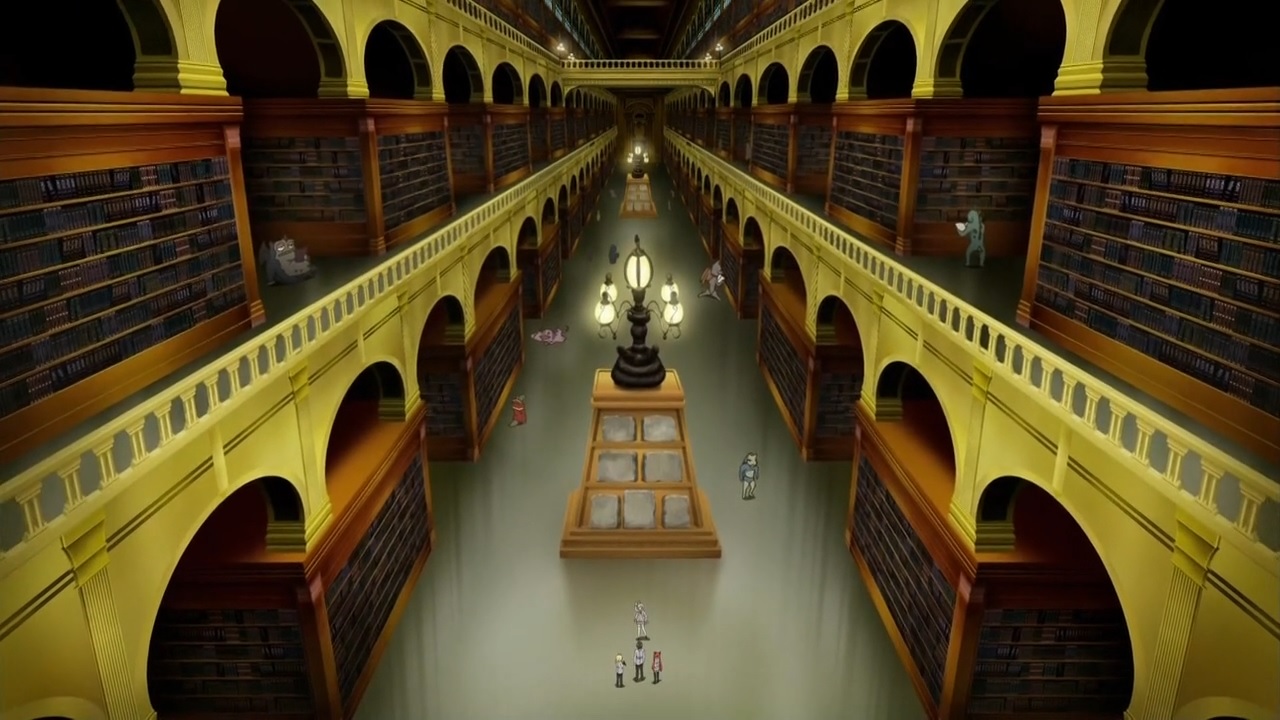
(2:44)
Many creatures from the Cthulhu Mythos appear in the Library. Only certain creatures given particular attention on screen will be explained.
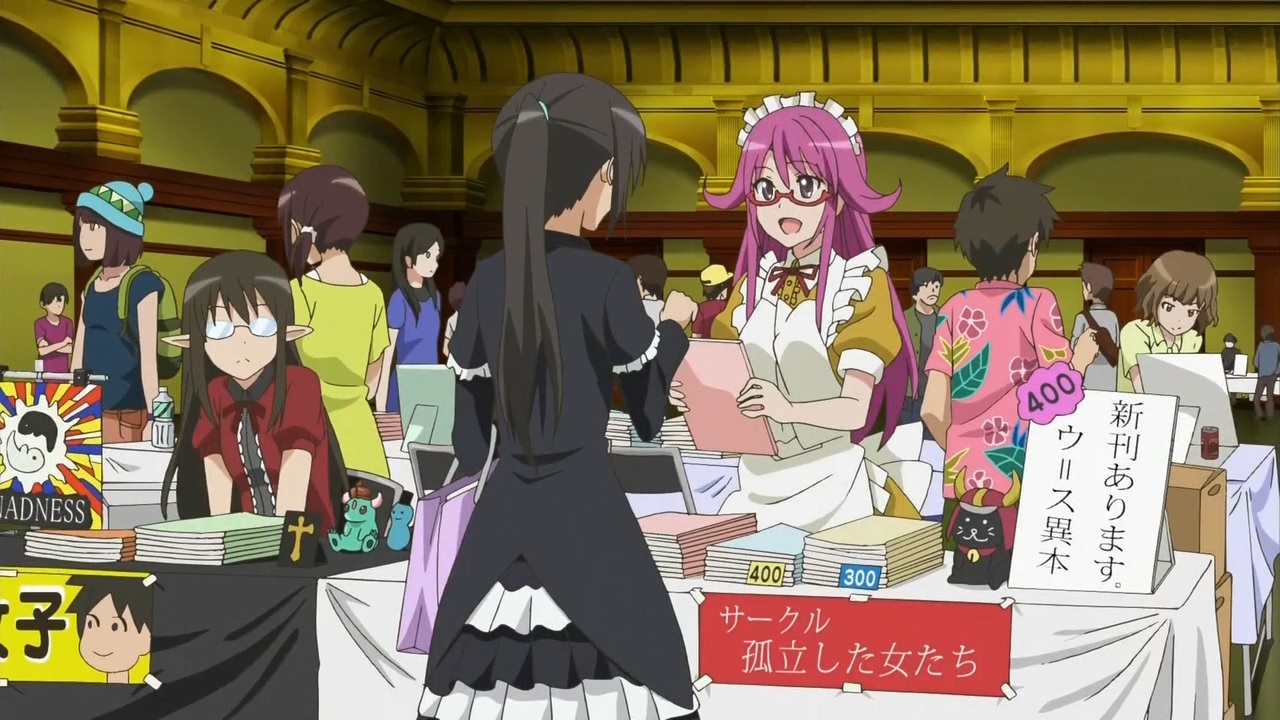
(2:55)
There are five references here:
* Tsuruko from episode 1 appears here. As mentioned before, she's based on Ut'ulls-Hr'ehr, a creature classified as a Great Old One in the Cthulhu Mythos.
* This is the red sign on Tsuruko's table:
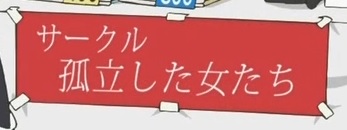
The red sign says "Saakuru koritsu shita musume tachi" (サークル孤立した娘たち), which translates to "The Daughters of Isolation circle". This is referencing The Daughters of Isolation, a small all-female cult in the Cthulhu Mythos that worships Ut'ulls-Hr'ehr. The cult is mentioned in "Malleus Monstrorum", a "Call of Cthulhu" RPG source book published by Chaosium in 2006.
* This is the white sign on Tsuruko's table:
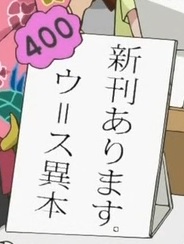
The white sign says, "Shinkan arimasu. U=Su Ihon" (新刊あります。ウ=ス異本), which translates to "New book available. Yiu-th variants of manuscripts". In addition, the line at this time goes as follows, "ibento de uri sareru 'U=Su Ihon' made" (イベントで売りされる「ウ=ス異本」まで), "to the Yiu-th variants of manuscripts sold at events". "U=Su Ihon" (ウ=ス異本), "Yiu-th variants of manuscripts", is a grimoire from the Cthulhu Mythos. This is also a pun on the Japanese term "usui hon" (薄い本), "thin book". This term is used to refer to "doujinshi" (同人誌), self published books typically sold at conventions.S1
* There is a doll on Tsuruko's desk.

This doll greatly resembles Hikonyan (ひこにゃん), the official mascot for the city of Hikone (彦根) in Japan.S1 Image for reference:
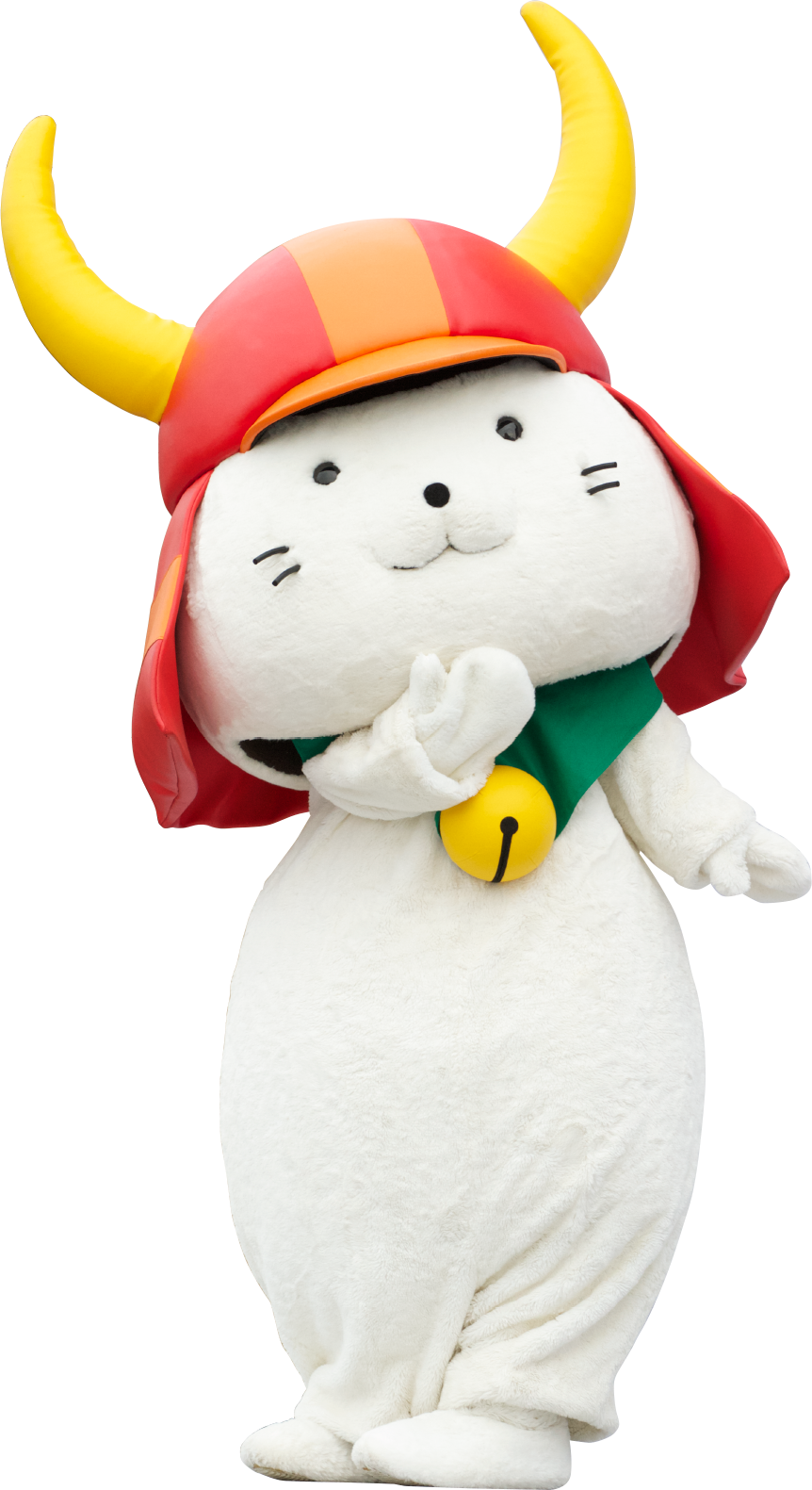
Source of image: https://hikone-hikonyan.jp/profile/
* This is the girl that appears on the left side of the screen:
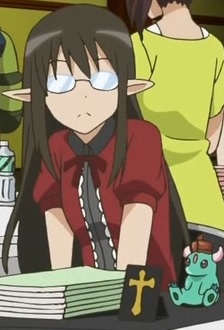
This girl resembles Ayako-san (アヤコサン) from "Yuri Seijin Naoko-san" (百合星人ナオコサン), "Yurian Naoko-san", a manga series written by kashmir and published starting from 2006.S1 Image for reference:
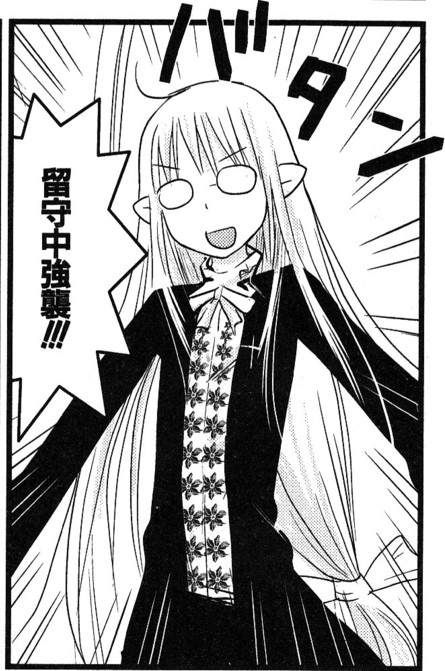
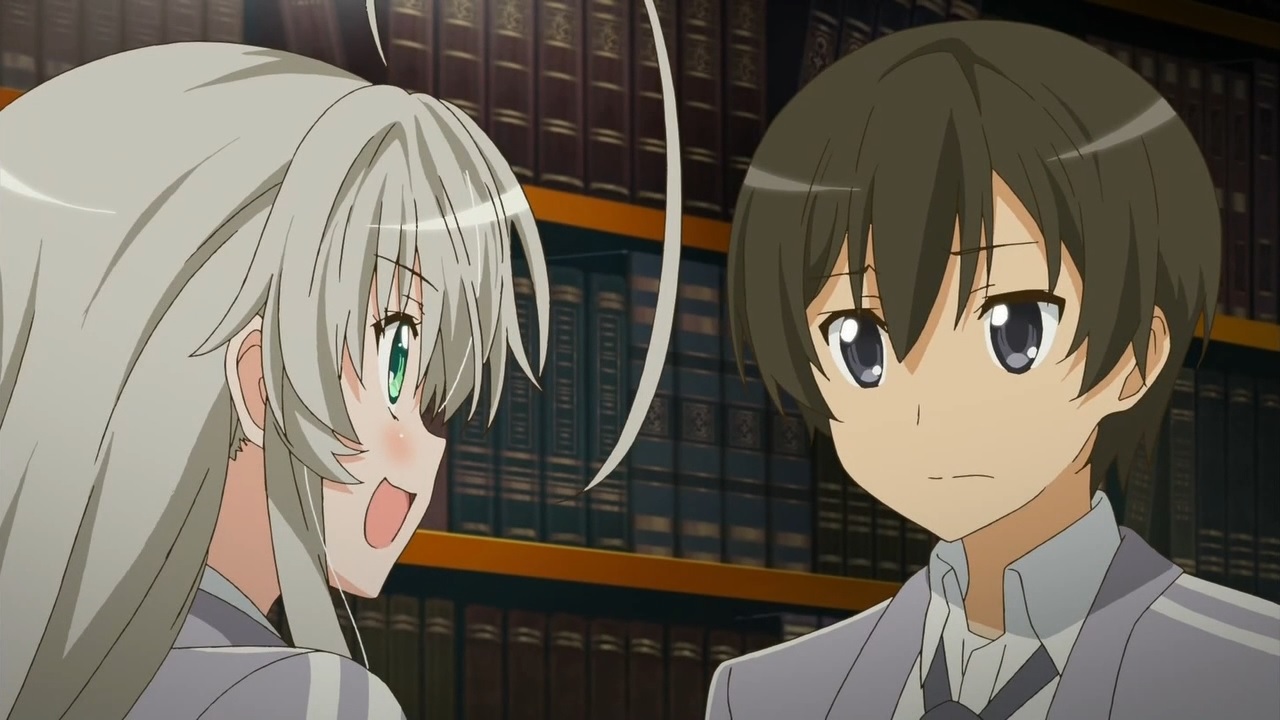
"The books here include the rare, very rare, super rare, and victory editions as well." (3:01)
Rare, Very Rare, Super Rare, and Victory are all rarity levels for cards in "Duel Masters" (デュエル・マスターズ), a Japanese trading card game that began release in 2002.S1
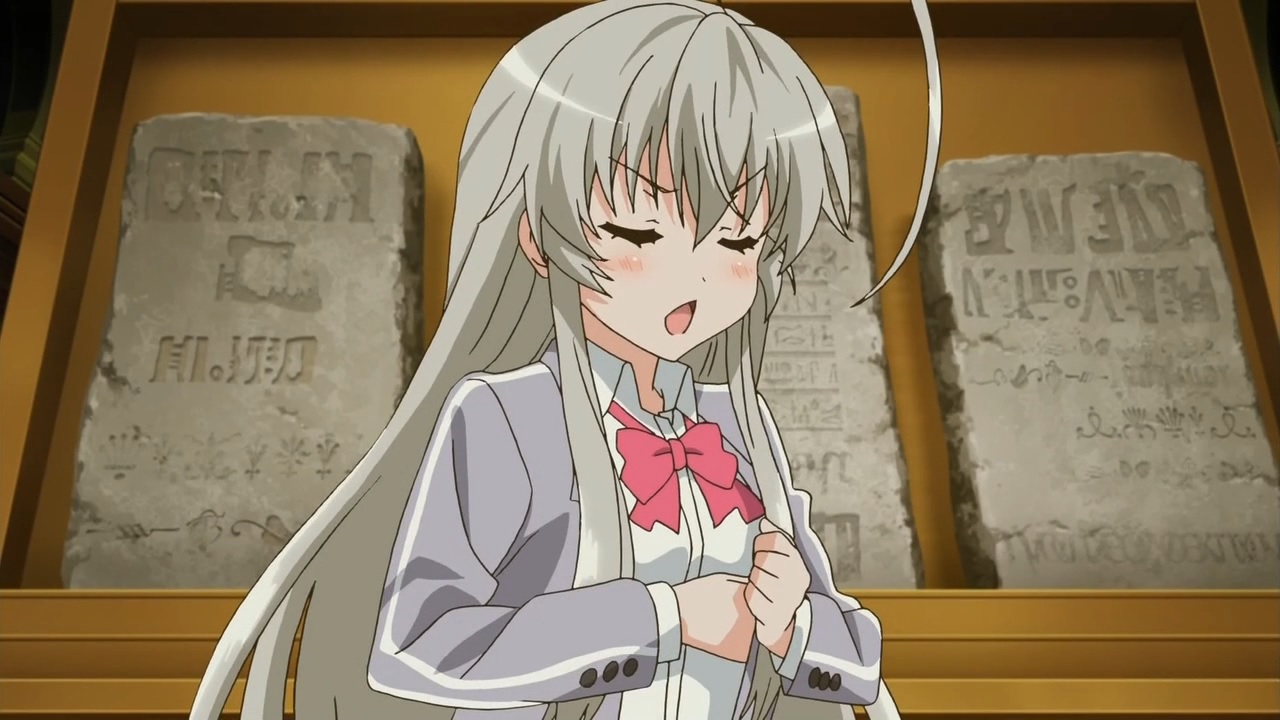
"I may not look it, but I'm a dreaming, soaring, lovestruck literature girl!" (3:31)
This line uses the following phrases:
* "yume miru" (夢見る), "dreaming"
* "sora mau" (空舞う), "soaring", more literally "dancing in the sky"
* "koi suru" (恋する), "lovestruck", more literally "in love"
* "bungaku shoujo" (文学少女), "literature girl"
Nyaruko's line is referencing "Bungaku Shoujo" (文学少女), "Literature Girl", a light novel series written by Nomura Mizuki (野村美月) and published from 2006 to 2011. More specifically, Nyaruko's line is referencing "'Bungaku Shoujo' Memowaaru" (“文学少女”メモワール), "'Literature Girl' Memoir", an anime adaptation of "Bungaku Shoujo" (文学少女) containing three episodes that were released in 2010.S2 The titles of these episodes go as follows:
『“文学少女”メモワールI -夢見る少女の前奏曲-』
『“文学少女”メモワールII -ソラ舞う天使の鎮魂曲-』
『“文学少女”メモワールIII -恋する乙女の狂想曲-』
"'Bungaku Shoujo' Memowaaru I -Yume Miru Shoujo no Zensoukyoku"
"'Bungaku Shoujo' Memowaaru II -Sora Mau Tenshi no Chinkonkyoku"
"'Bungaku Shoujo' Memowaaru III -Koi suru Otome no Kyousoukyoku"
"'Literature Girl' Memoir I -Prelude of the Dreaming Girl-"
"'Literature Girl' Memoir II -Requiem of the Angel that Dances in the Sky-"
"'Literature Girl' Memoir III -Rhapsody of the Maiden in Love-"
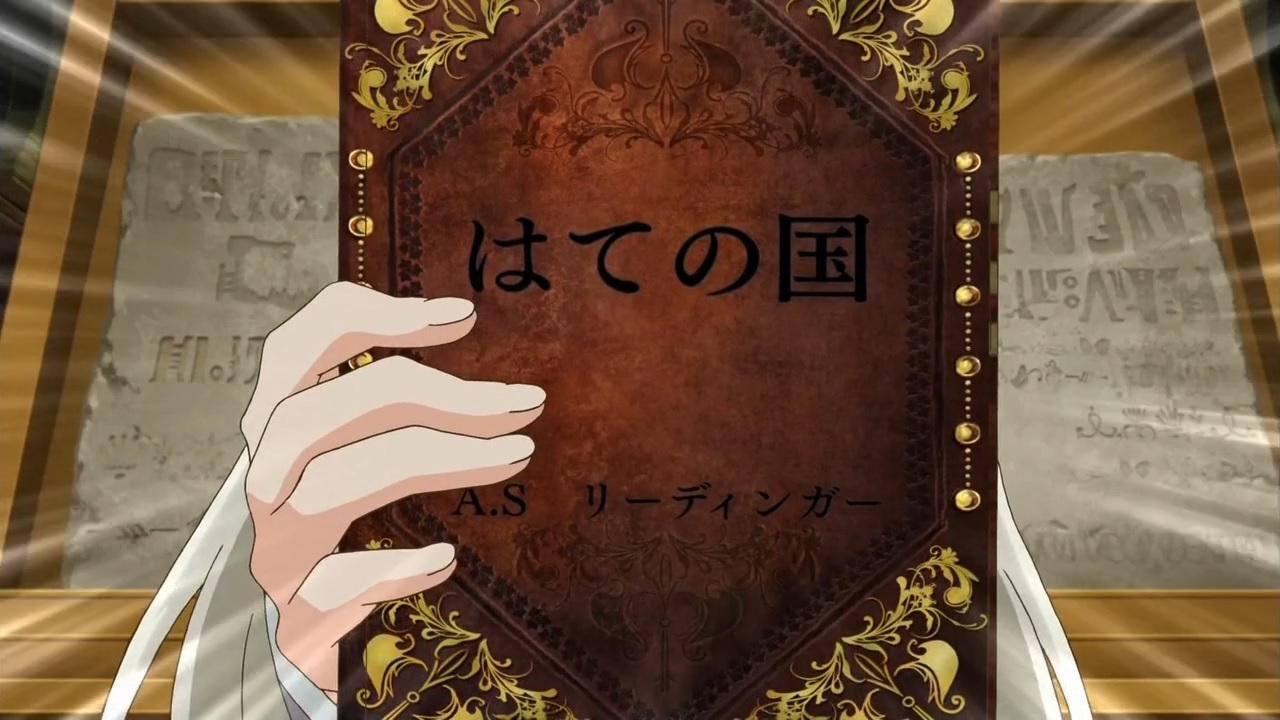
(3:35)
The title of the book is "Hate no Kuni" (はての国), "Land of the End". The author is "A.S Riidingaa" (A.S リーディンガー), "A.S Ridinger". This is referencing a book that is mentioned in "Divi Dead" (ディヴァイデッド), a visual novel released by C's Ware in 1998.S3 In this visual novel, one of the characters, Okui Mami (奥井まみ), is reading a book written by A.S. Ridinger (A・S・リーディンガー) in a scene during the evening of day 1 of the game. In addition, she mentions that her favorite book written by A.S. Ridinger is "Hate no Kuni" (はての国), "Land of the End". Images for reference:
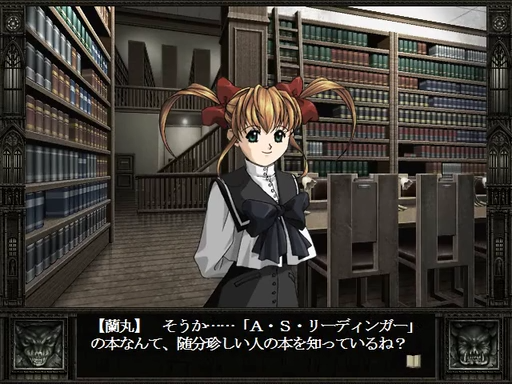
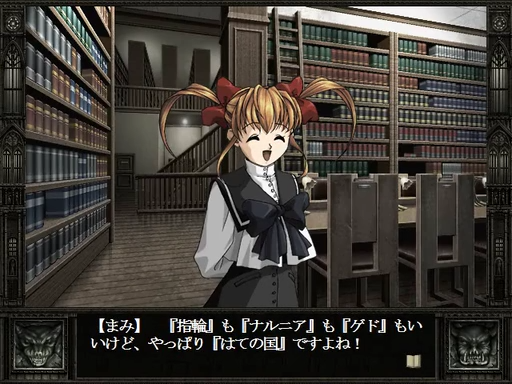
Source of images: http://www.nicovideo.jp/watch/sm12455699
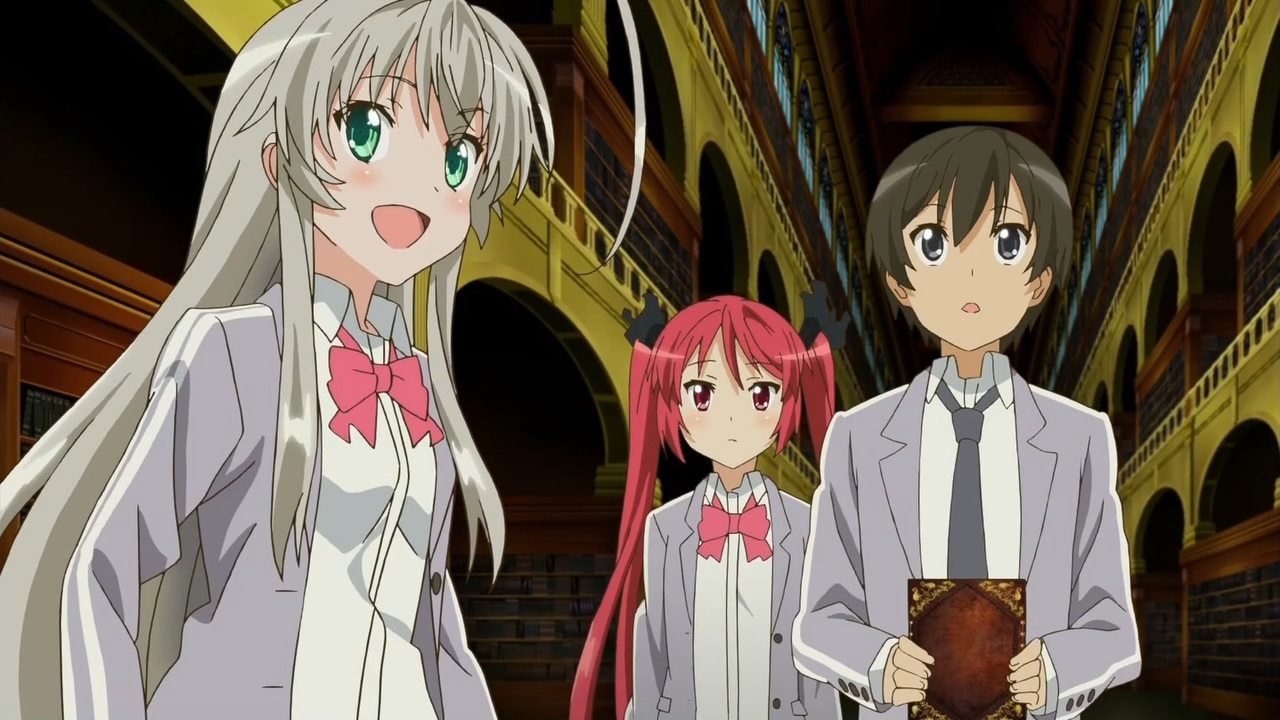
"I guess he still gets excited from coming here, being a former staff member." (4:00)
As mentioned earlier, the Celaeno Library is implied to be under the control and domain of Hastur. Celaeno is a star in the Taurus constellation. In "The Dweller in Darkness", a short story written by August Derleth and first published in 1944, it is stated that, "Hastur was imprisoned upon a black star near Aldebaran in the Hyades." However, Aldebaran is located in the Taurus constellation, not the Hyades star cluster. Aldebaran is in the line of sight between the Earth and the Hyades, which gives it the appearance of being in the Hyades. In "The Trail of Cthulhu", a book written by August Derleth and published in 1962, the protagonists are able to reach the Celaeno Library by riding Byakhee. Byakhee is a species of creature in the Cthulhu Mythos, and in the book it is stated that they are capable of moving through space and serve Hastur. Since Celaeno and Aldebaran are both located in the Taurus constellation, and creatures that serve Hastur know the location of the Celaeno library and are permitted to reach it, this seems to imply that Hastur holds influence over Celaeno.
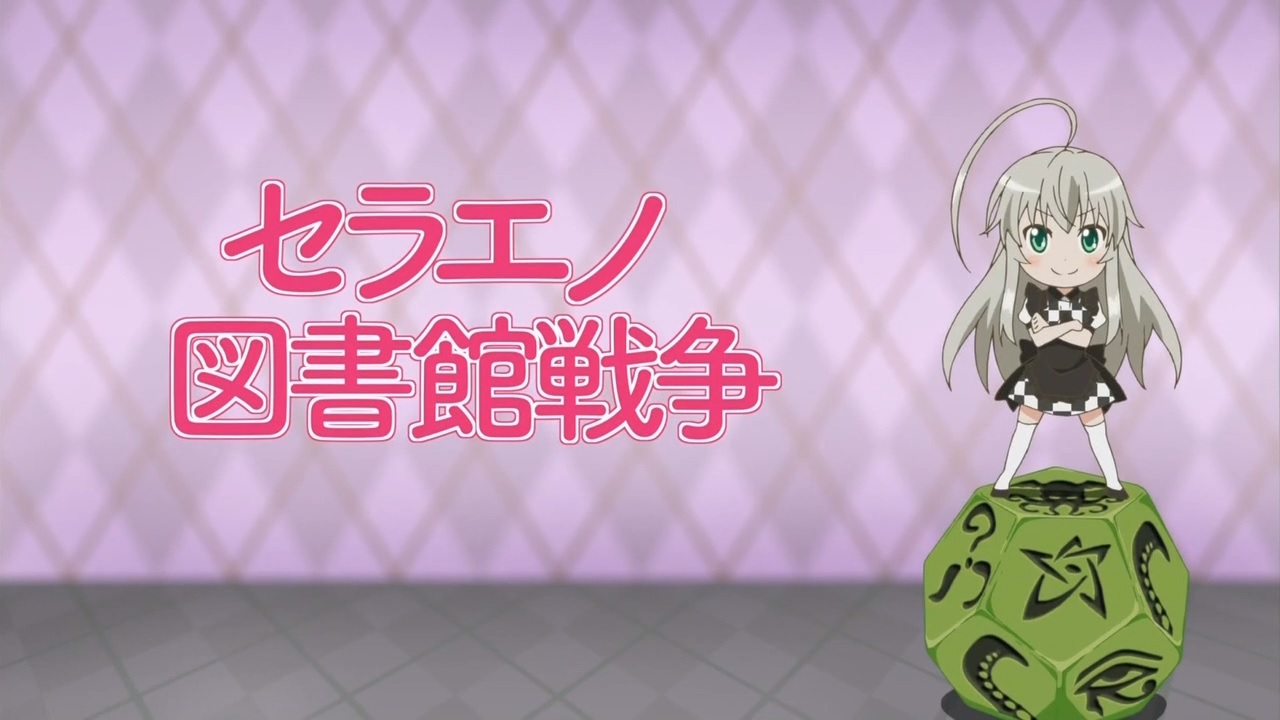
(4:40)
The title of this episode is "Seraeno Toshokan Sensou" (セラエノ図書館戦争), which translates to "Celaeno Library War". There are two references here:
* As mentioned, the Celaeno Library is a great library located on Celaeno in the Cthulhu Mythos.
* "Toshokan Sensou" (図書館戦争), "Library War", is the title of a light novel series written by Arikawa Hiro (有川浩) and published from 2006 to 2007.
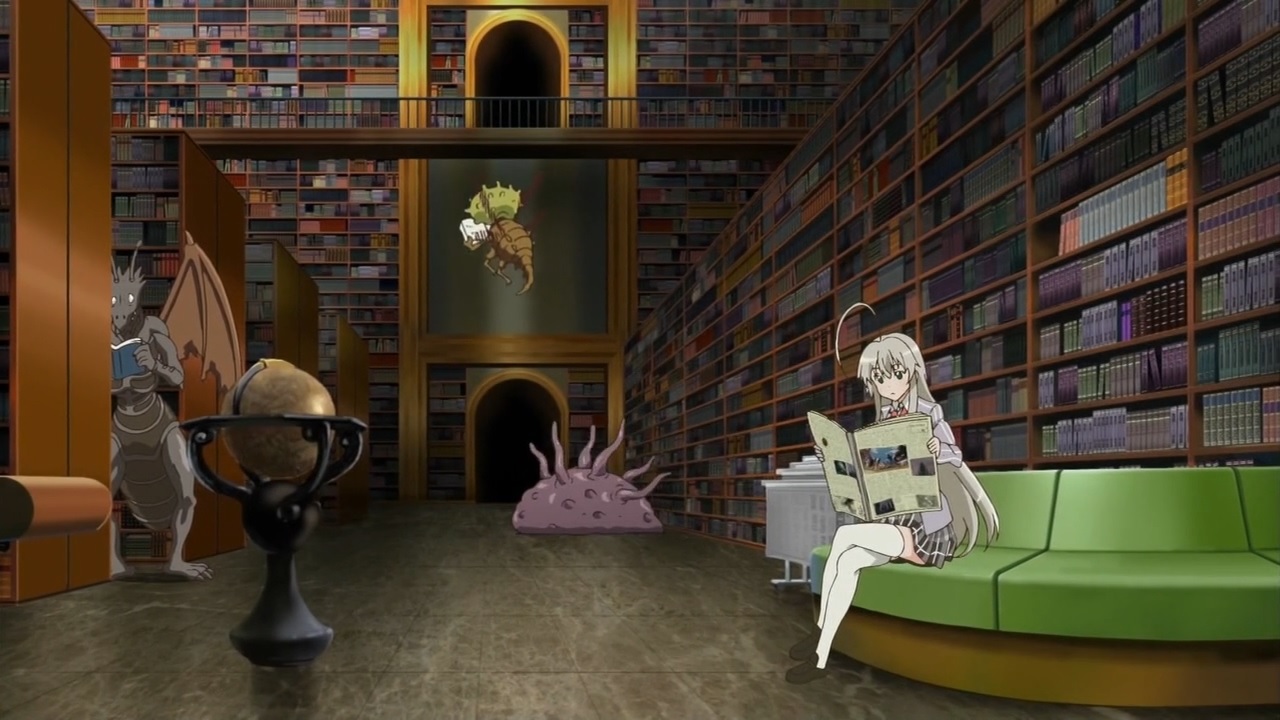
"Let's see what's going on in the world today." (5:09)
There are two references here:
* The Japanese line is "Sate, kyou no sekai jousei ha tto" (さて、今日の世界情勢はっと). This is referencing "Urusei Yatsura 2: Beautiful Dreamer" (うる星やつら2 ビューティフル・ドリーマー), an anime movie that was released in 1984.S2 This movie is the second in a series of movies based on "Urusei Yatsura" (うる星やつら), a manga series written by Takahashi Rumiko (高橋留美子) and published from 1978 to 1987. In the movie, a character known as Megane (メガネ) says the exact same line as Nyaruko while reading a newspaper.
* This same line is also said by Shiba Shigeo (シバシゲオ) when reading a newspaper in "Kidou Keisatsu Patoreibaa the Movie" (機動警察パトレイバー the Movie), "Patlabor: The Movie", a movie that was released in 1989. The connection is that the voice actor who voices Megane, Chiba Shigeru (千葉繁), also voices Shiba Shigeo.S2
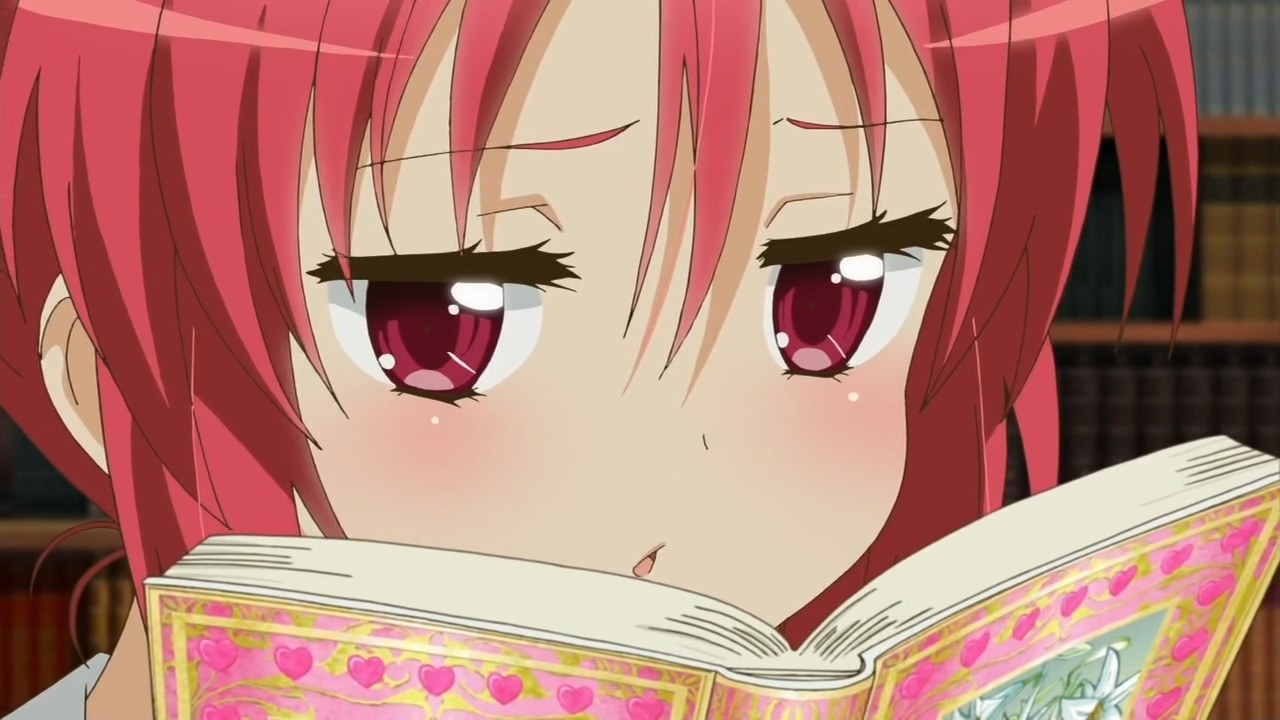
(5:24 - 5:42)
Cthuko's line in this scene goes as follows,
「大きさが重要なのではない。そう、大切なのは先端部分。先端部分が見えるか見えないかが、これまで世界を動かしてきたと言っても、過言ではないのだ。」This is referencing a series of lines said by Naoko-san (ナオコサン) in chapter 10 of volume 1 of "Yuri Seijin Naoko-san" (百合星人ナオコサン), "Yurian Naoko-san".S2 Her lines go as follows,
"Ookisa ga juuyou na no de ha nai. Sou, taisetsu na no ha sentan bubun. Sentan bubun ga mieru ka mienai ka ga, kore made sekai wo ugokashite kita to itte mo, kagon de ha nai no da."
"It's not the size that matters. Yes, what's important is the tip. It's no exaggeration to say that the world has revolved around whether the tip can be seen or not."
「大きさなんて大したことじゃないさ。そう、大切なのは先端部分だ!!先端部分が見えるか見えないかが、これまで世界を動かしてきたと言っても過言ではないのだ。」Image for reference:
"Ookisa nante taishita koto ja nai sa. Sou, taisetsu na no ha sentan bubun da!! Sentan bubun ga mieru ka mienai ka ga, kore made sekai wo ugokashite kita to itte mo kagon de ha nai no da."
"Size isn't important. Yes, what's important is the tip!! It's no exaggeration to say that the world has revolved around whether the tip can be seen or not."
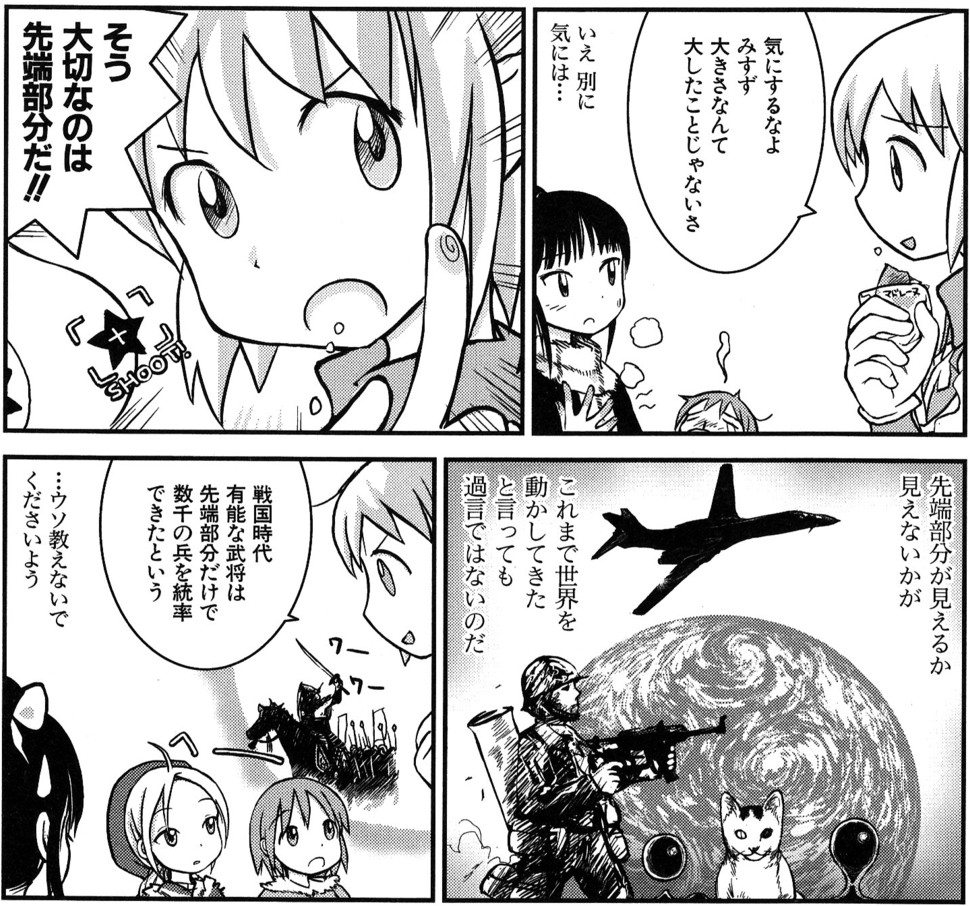
(5:43 - 6:01)
Cthuko's line in this scene continues as follows:
「毎日牛乳5リットル。あまり過剰な摂取はむしろ別の部分を肥大させてしまい、それはそれである種の人々を喜ばせていることを彼女は知る由もなかった。」This is referencing lines said by Aya-chan(彩ちゃん) and Naoko-san that follow after the above mentioned lines from chapter 10 of volume 1 of "Yuri Seijin Naoko-san" (百合星人ナオコサン), "Yurian Naoko-san". The original lines go as follows:
"Mainichi gyuunyuu go littoru. Amari kajou na sesshu ha mushiro betsu no bubun wo hidai sasete shimai, sore ha sore de aru shu no hitobito wo yorokobaseteiru koto wo kanojo ha shiru yoshi mo nakatta.
"5 liters of milk every day. Excessive intake can instead cause swelling of another region. Some people find great joy in this, but she had no way of knowing that."
彩ちゃん: 「毎日牛乳5リットル飲んでるし!!」Image for reference:
ナオコサン: 「しかしあまり過剰な摂取はむしろ別の部分を肥大させてしまい、それはそれである種の人々を喜ばせていることを彼女は知る由もなかった」
Aya-chan: "Mainichi gyuunyuu go littoru noderu shi!!"
Naoko-san: "Shikashi amari kajou na sesshu ha mushiro betsu no bubun wo hidai sasete shimai, sore ha sore de aru shu no hitobito wo yorokobaseteiru koto wo kanojo ha shiru yoshi mo nakatta."
Aya-chan: "I drink 5 liters of milk every day!!"
Naoko-san: "However, excessive intake can instead cause swelling of another region. Some people find great joy in this, but she had no way of knowing that."
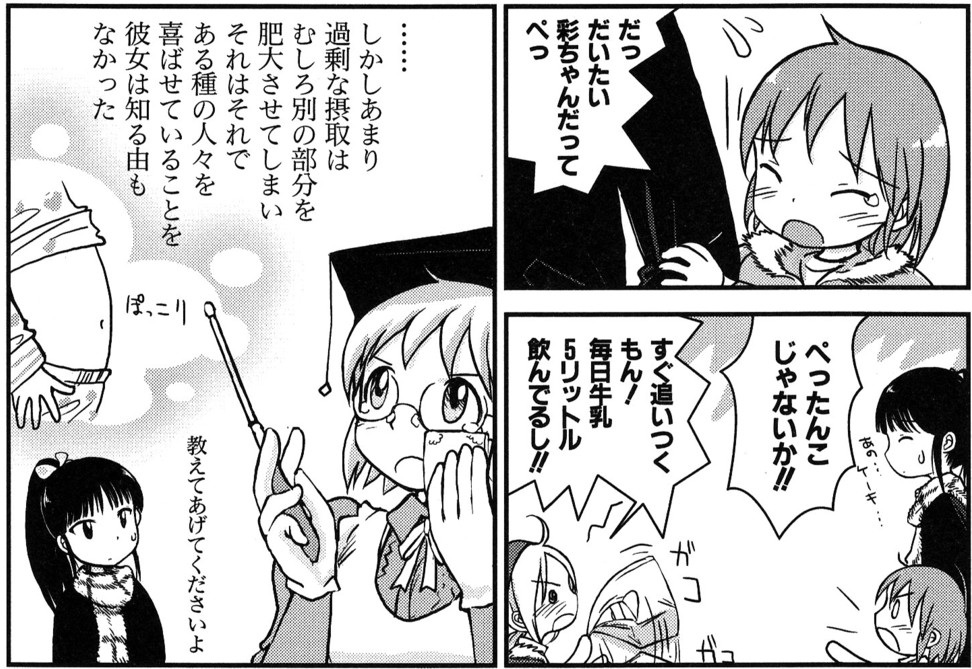
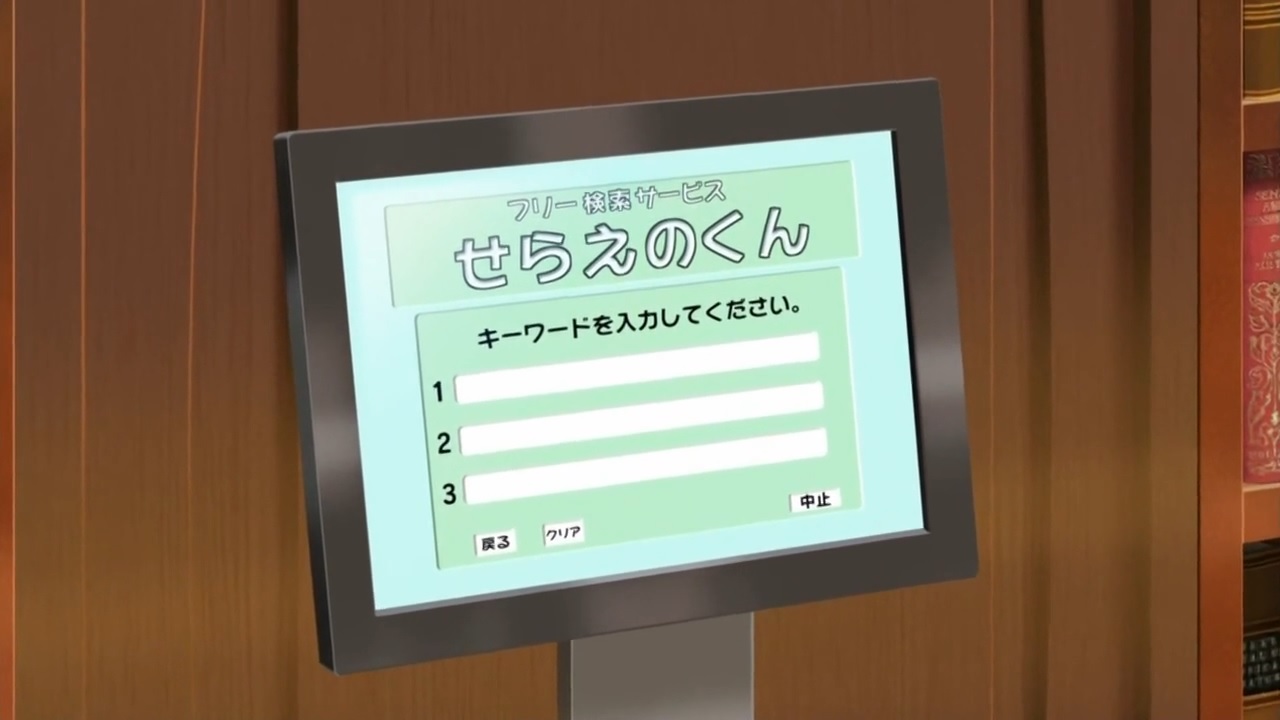
(6:15 - 7:04)
The search engine and its use of three keywords to search for books is referencing "Kamen Rider W" (仮面ライダーW), a Japanese TV show about a masked super hero that aired from 2009 to 2010.S1 Philip (フィリップ), one of the main characters in "Kamen Rider W", has the ability to access "Hoshi no Hondana" (地球の本棚), "The Gaia Bookshelves". The Gaia Bookshelves are said to contain all of the information known in the world. Philip is able to look up information in the Gaia Bookshelves by entering keywords to narrow down results.
(7:15)
There are two references here:
* Screens that appear with red text on them when the database freezes is referencing "Kidou Keisatsu Patoreibaa the Movie" (機動警察パトレイバー the Movie), "Patlabor: The Movie", a movie released in 1989.S2 In the movie, there are various scenes in which a computer virus planted in the programming of an operating system causes computer screens to repeatedly display the word "BABEL" in red. Image for reference:
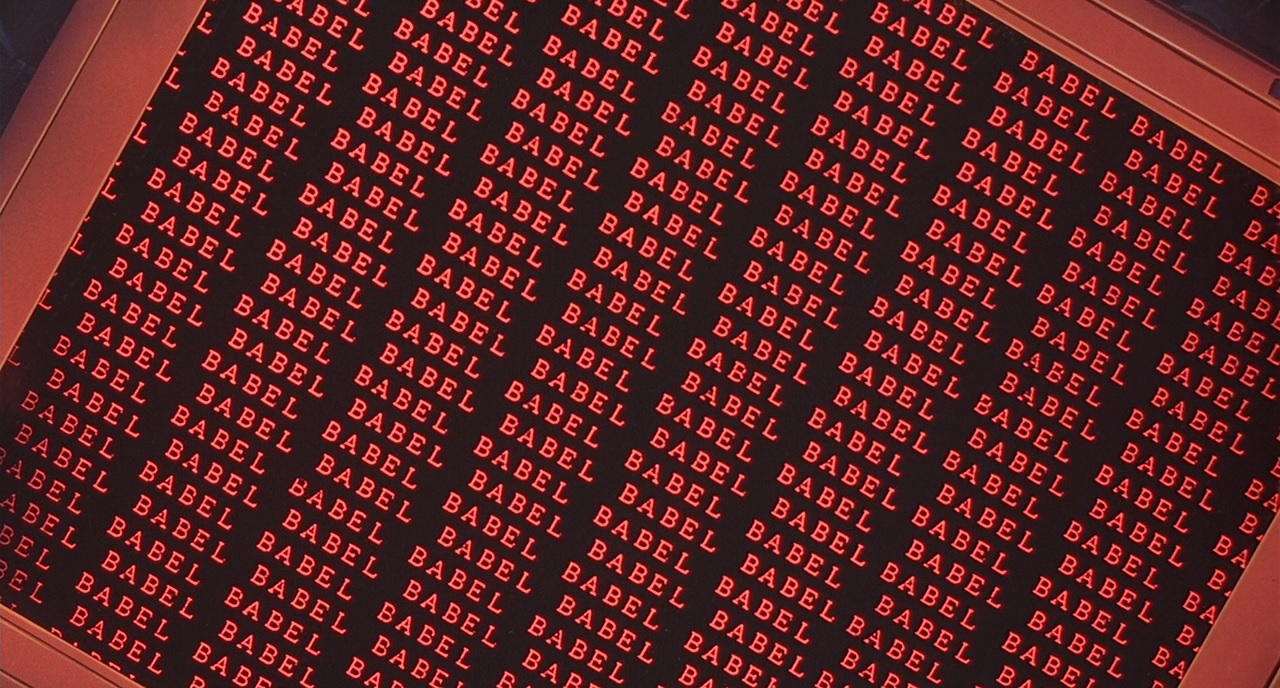
* The text that appears on the screens lists names of various different avatars of Nyarlathotep in the Cthulhu Mythos that are documented in "Malleus Monstrorum", a "Call of Cthulhu" RPG source book published by Chaosium in 2006.S3
(7:20)
The line at this time goes as follows:
「人は皆青春の後ろ姿を忘れてしまうものなんですよ」This is referencing a line in the lyrics to "Ano Hi ni Kaeritai" (あの日にかえりたい), "I Want to Return to that Day", a song sung by Matsutouya Yumi (松任谷由実) and released in 1975.S1 The original line goes as follows:
"Hito ha mina seishun no ushiro sugata wo wasurete shimau mono nan desu yo"
"All people are beings that forget the retreating figure of youth"
「青春の後ろ姿を人はみな忘れてしまう」
"Seishun no ushiro sugata wo hito ha mina wasurete shimau"
"All people forget the retreating figure of youth"
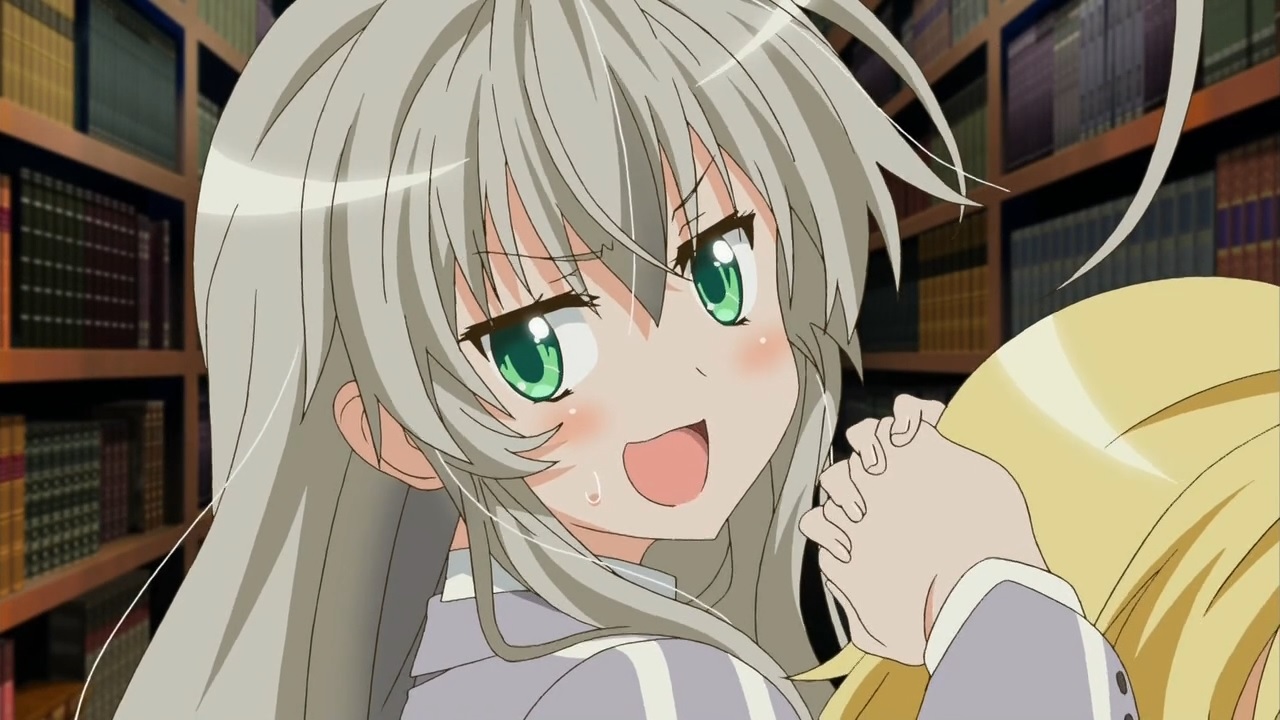
(7:25)
The line at this time goes as follows:
「それにまだ我々はチョコパフェやらイケメンやらにガチで夢中になれるお年頃ですから。」This is referencing lines in the lyrics to "Gecchuu! Raburabuu?!" (ゲッチュウ!らぶらぶぅ?!), "Get You! Love Love?!", a song sung by Gojou Mayumi (五條真由美) and released in 2004. This song is the ending theme song to "Futari ha Purikyua" (ふたりはプリキュア), "We are Pretty Cure", an anime series that aired from 2004 to 2005.S2 The original lines go as follows:
"Sore ni mada wareware ha choko pafe yara ikemen yara ni gachi de muchuu ni nareru otoshi goro desu kara."
"Besides, we're still at the age where we can seriously go crazy about chocolate parfaits and hot guys."
「チョコパフェとか、イケメンとか」 「マジに夢中になれる年頃なの」
"Choko pafe toka, ikemen toka" "Maji ni muchuu ni nareru toshi goro na no"
"I'm at the age where I can seriously go crazy about chocolate parfaits and hot guys"
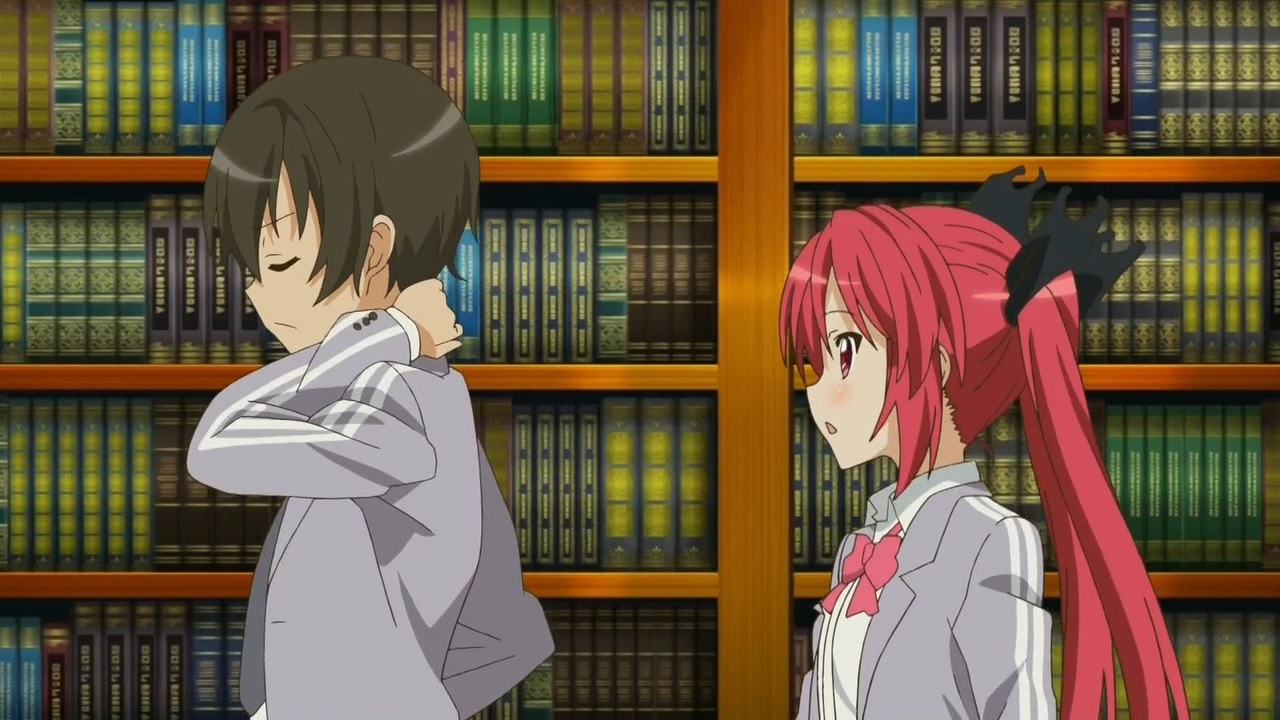
"Boy, a single lie can make life more interesting than a thousand truths." (7:45)
The Japanese line is "Shounen, jinsei wo omoshiroku suru no ha sen no shinjitsu yori hitotsu no uso" (少年、人生を面白くするのは千の真実より一つの嘘). This is referencing a line said by Uratarosu (ウラタロス) in episode 6 of "Kamen Rider Den-O" (仮面ライダー電王), a Japanese TV show about a masked super hero that aired from 2007 to 2008.S1 His line goes, "Jinsei wo omoshiroku suru no ha, sen no shinjitsu yori hitotsu no uso da yo" (人生をおもしろくするのは、千の真実より一つのうそだよ), which translates to "A single lie can make life more interesting than a thousand truths".
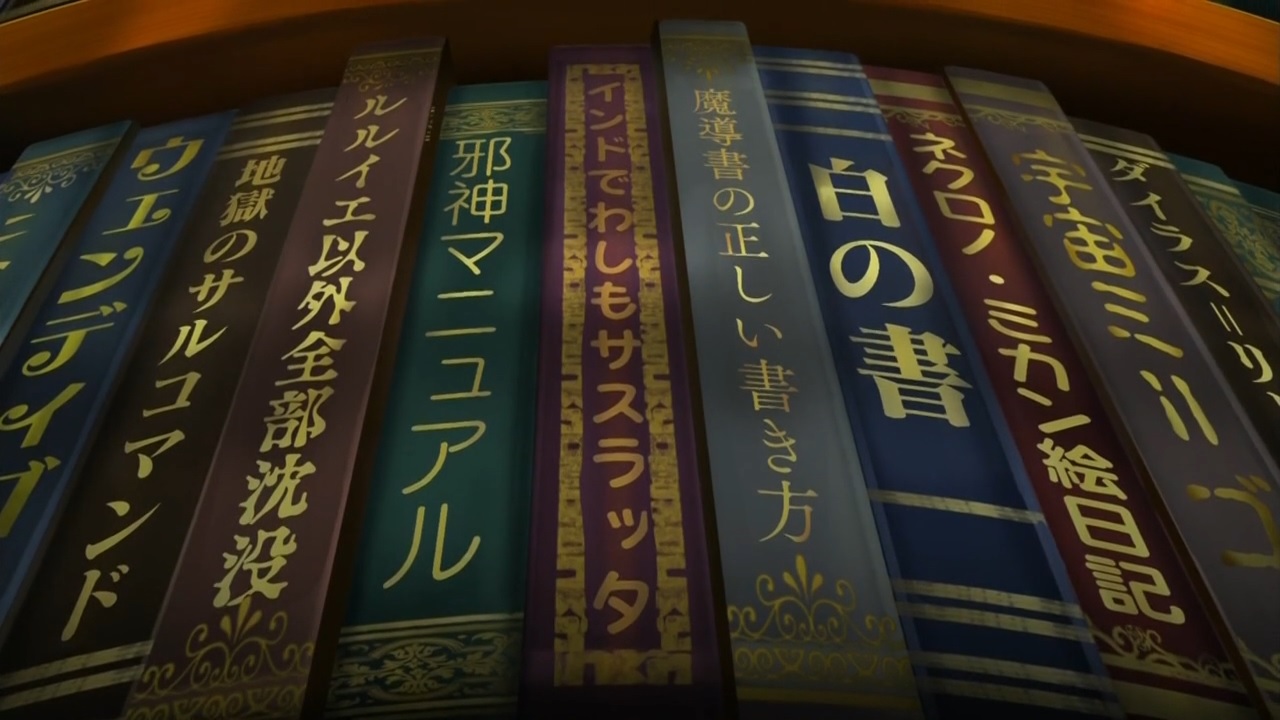
(7:55)
The books that appear here are as follows, from left to right:
"Uendigo no Yoru" (ウェンディゴの夜), "Wendigo Night"
* This is referencing "Indigo no Yoru" (インディゴの夜), "Indigo Night", a novel written by Katou Miaki (加藤実秋) and published in 2005.S1
* Wendigo is referencing Ithaqua, a creature classified as a Great Old One in the Cthulhu Mythos. Wendigo is originally a creature from Algonquian mythology. The creature appears in "The Wendigo", a short story written by Algernon Blackwood and published in 1910. August Derleth created the creature Ithaqua based on the Wendigo creature and Blackwood's story. Ithaqua appears in "The Thing that Walked on the Wind", a short story written by August Derleth and first published in 1933. In "Beyond the Threshold", a short story written by August Derleth and first published in 1941, the following is stated, "Ithaqua, sometimes called Wind-Walker, and by some surely, the Wendigo, by certain Indians in upper Manitoba...".
"Jigoku no Sarukomando" (地獄のサルコマンド), "The Sarkomand from Hell"
* This is referencing "Jigoku no Komando" (地獄のコマンド), "The Commando from Hell". This is the title for the Japanese dub release of "Invasion U.S.A.", an American action film that was originally released in 1985.S1
* Sarkomand is a location in the Cthulhu Mythos. In "The Dream-Quest of Unknown Kadath", a story written by H. P. Lovecraft and published in 1943, it is described as "that deserted city in the valley below Leng".
"Ruruie Igai Zenbu Chinbotsu" (ルルイエ以外全部沈没), "Everything Sinks Except R'lyeh "
* This is referencing "Nihon Igai Zenbu Chinbotsu" (日本以外全部沈没), "Everything Sinks Except Japan", a novel written by Tsutsui Yasutaka (筒井康隆) and published in 1973.S1
* In the Cthulhu Mythos, R'lyeh is a sunken city in the Pacific ocean where Cthulhu is imprisoned.
"Jashin Manyuaru" (邪神マニュアル), "Evil God Manual"
* This is referencing "Jashin Oonuma" (邪神大沼), "Evil God Oonuma", a light novel series written by Kawagishi Ougyo (川岸殴魚) and published from 2009 to 2011. In the series, there is a book called "Shoshinsha Raku Raku Jashin Manyuaru" (初心者らくらく邪神マニュアル), which translates to "Easy Evil God Manual for Beginners".S2
* "Jashin" (邪神) literally means "evil god". This term is used to refer to creatures that are in the "Great Old One" classification in the Cthulhu Mythos. This classification pertains to tremendously powerful creatures that are considered to be on the level of gods. Notable examples include Cthulhu, Cthugha, and Hastur. Nyarlathotep is classified as an Outer God in the Cthulhu Mythos, however in "Haiyore! Nyaruko-san", Nyarlathotep is also referred to by the term "jashin" (邪神).
"Indo de Washi mo Sasuratta" (インドでわしもサスラッタ), "In India I also Cast Sathlatta"
* This is referencing "Indo de Washi mo Kangaeta" (インドでわしも考えた), "In India I also Thought", a novel written by Shiina Makoto (椎名誠) and published in 1984.S1
* Sathlatta is the name of a series of magic spells in the Cthulhu Mythos. The third Sathlatta is a counterspell that appears in "The Kiss of Bugg-Shash", a short story written by Brian Lumley and published in 1978. The sixth Sathlatta is a spell contained within the Cthaat Aquadingens, a grimoire from the Cthulhu Mythos, and appears in "The Horror at Oakdeene", a short story written by Brian Lumley and published in 1970. The ninth Sathlatta is a protective spell mentioned in "Cryptically Yours", a short story written by Brian Lumley and published in 1977.
"Madousho no Tadashii Kakikata" (魔導書の正しい書き方), "The Proper Way to Write a Grimoire"
* This is referencing "Raito Noberu no Tanoshii Kakikata" (ライトノベルの楽しい書き方), "The Fun Way to Write a Light Novel", a light novel series written by Honda Tooru (本田透) and published from 2008 and is currently ongoing.S1
* There exist many grimoires in the Cthulhu Mythos. Notable examples include the Necronomicon, the Book of Eibon, and the Pnakotic Manuscripts.
"Shiro no Sho" (白の書), "White Book"
* This is referencing "Shisou Toshokan no Rivuru Buranshe" (死想図書館のリヴル・ブランシェ), "Livre Blanche of the Library of Dead Thoughts", a light novel series written by Origuchi Yoshino (折口良乃) and published from 2010 and is currently ongoing. "Rivuru Buranshe" (リヴル・ブランシェ) is the Japanese pronunciation of "Livre Blanche", which is French for "White Book".S2
* There exists a grimoire in the Cthulhu Mythos called the "Black Book", and is known as "Kuro no Sho" (黒の書) in Japanese. It is also known by the names "Unaussprechlichen Kulten" and "Nameless Cults".
"Nekurono Mikan Enikki" (ネクロノ・ミカン絵日記), "Necrono Mikan Picture Diary"
* This is referencing "Mikan Enikki" (みかん絵日記), "Mikan Picture Diary", a manga series written by Abiko Miwa (安孫子三和) and published from 1988 to 1995.S1 The series is about a talking cat named Mikan who keeps a picture diary.
* The phrase "Nekurono Mikan" (ネクロノ・ミカン) is a pun on "Nekuronomikon" (ネクロノミコン), the Japanese pronuciation for Necronomicon. The Necronomicon is a magical grimoire in the Cthulhu Mythos.
"Utsu no Mi=Go" (宇宙ミ=ゴ), "Space Mi-go"
* This is referencing "Utsu no Miko" (宇宙皇子), "Space Prince", a light novel series written by Fujikawa Keisuke (藤川桂介) and published from 1984 to 1998.S1
* Mi-go is a species of creature in the Cthulhu Mythos.
"Dairasu=Riin no Tsubasa" (ダイラス=リーンの翼), "The Wings of Dylath-Leen"
* This is referencing "Riin no Tsubasa" (リーンの翼), "The Wings of Rean", a light novel series written by Tomino Yoshiyuki (富野由悠季) and published from 1983 to 1986.S1
* Dylath-Leen is the name of a fictional city that appears in "The Dream-Quest of Unknown Kadath", a story written by H. P. Lovecraft and first published in 1943.
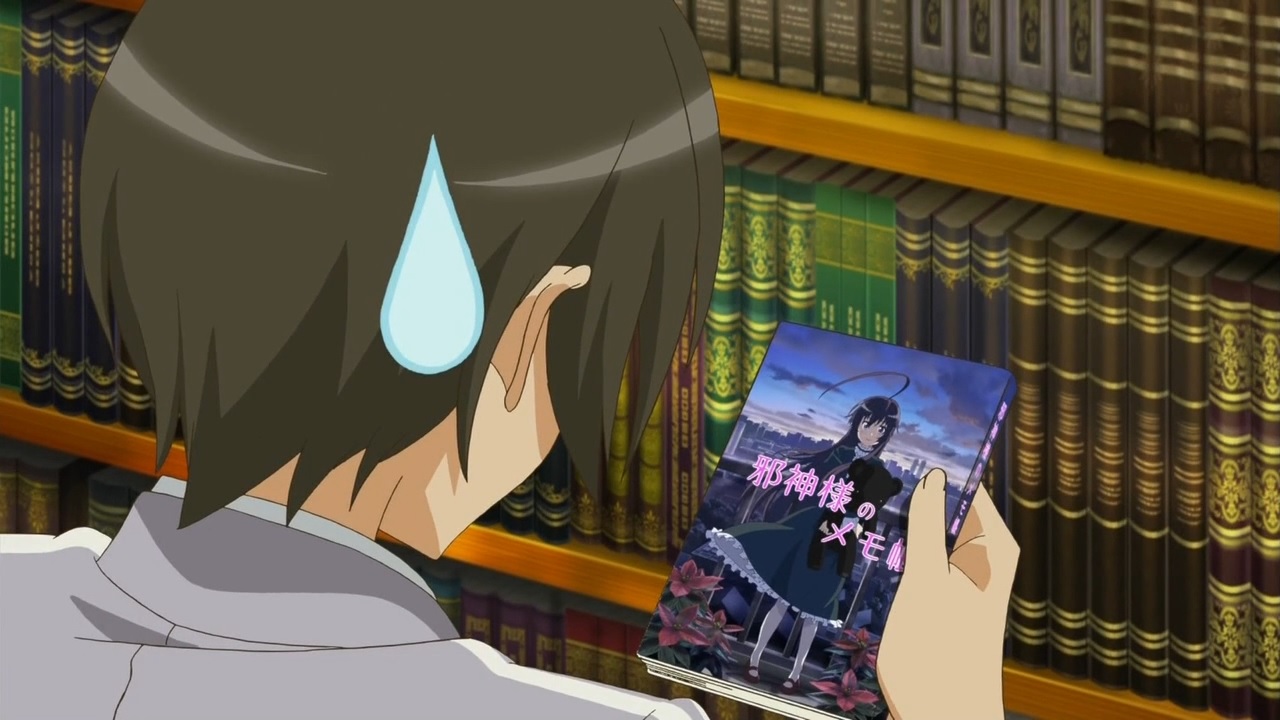
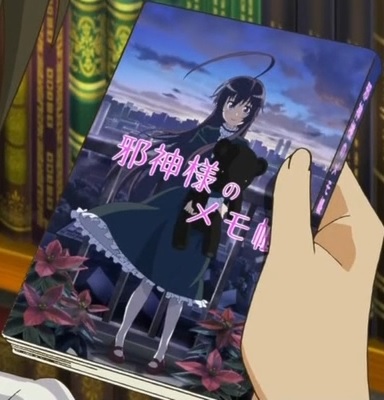
(8:14)
The title of the book is "Jashin-sama no Memo Chou" (邪神様のメモ帳), which translates to "Evil God's Memo Pad". This is referencing "Kami-sama no Memo Chou" (神様のメモ帳), "God's Memo Pad", a light novel series written by Sugii Hikaru (杉井光) and published starting from 2007. The cover of the book is also referencing the cover art of volume 1 of this series. Image for reference:
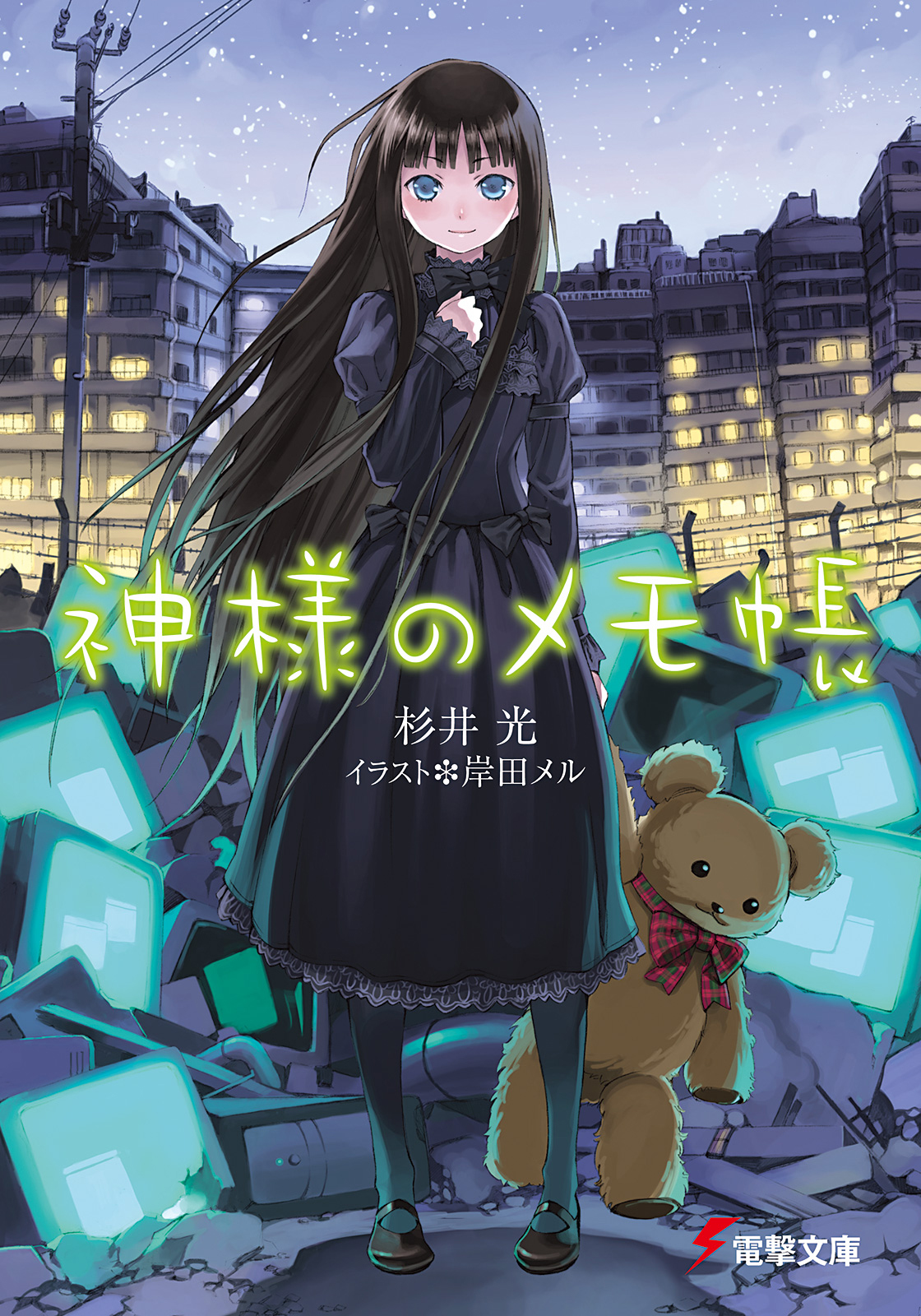
Source of image: https://bookwalker.jp/de99856cb3-05c9-41ac-98de-8b035457bf09/
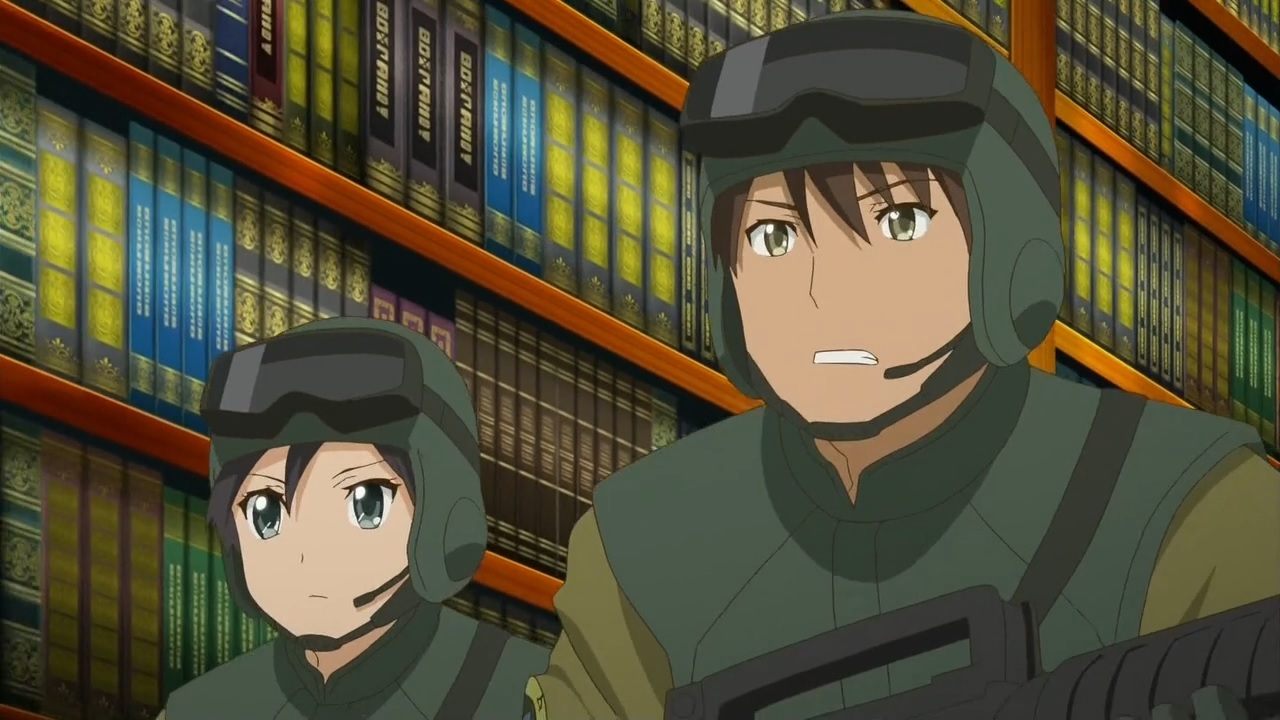
(8:17)
"Seraeno Toshotai" (セラエノ図書隊), "Celaeno Library Squad", is referencing "Toshotai Boueibu" (図書隊防衛部), "Library Squad Defense Force". The Library Squad Defense Force is an organization that defends libraries in "Toshokan Sensou" (図書館戦争), "Library War", a light novel series written by Arikawa Hiro (有川浩) and published from 2006 to 2007.S1 In addition, the two characters that appear here resemble the two main characters of "Toshokan Sensou", Kasahara Iku (笠原郁) and Doujou Atsushi (堂上篤), except their hair colors are switched.S1 Images for reference (from left to right, Kasahara and Doujou):
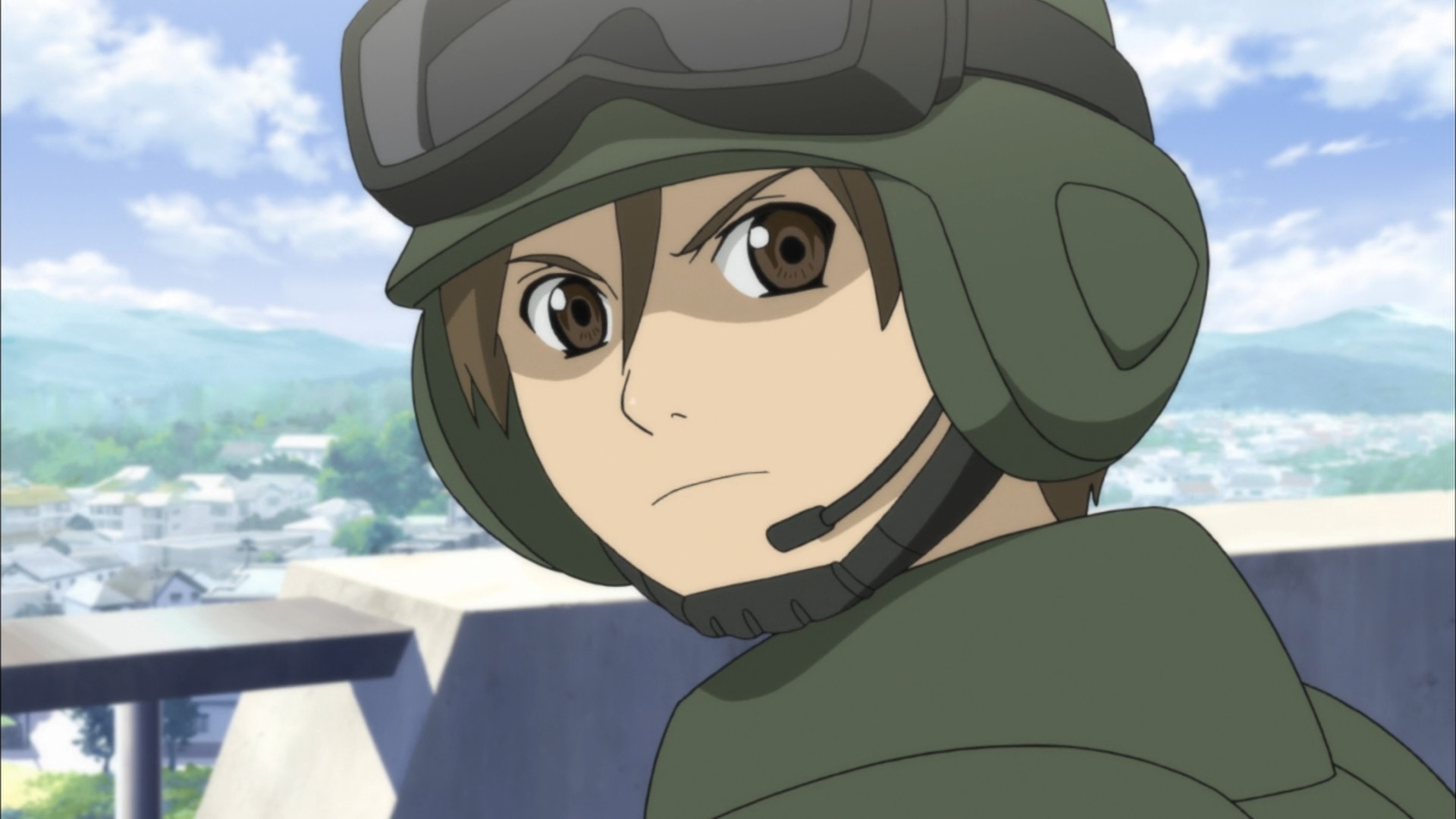

(8:27)
The line at this time goes as follows:
「図書館の自由が侵される時、我々は団結して自由を守る!」This is referencing a line from "Toshokan Sensou" (図書館戦争) that goes as follows:
"Toshokan no jiyuu ga okasareru toki, wareware ha danketsu shite jiyuu wo mamoru!"
"When the freedom of the library is threatened, we will band together to protect that freedom!"
「図書館の自由が侵される時、我々は団結して、あくまで自由を守る。」This is originally a line from "Toshokan no Jiyuu ni Kan suru Sengen" (図書館の自由に関する宣言), "Statement on Intellectual Freedom in Libraries", a declaration passed in Japan in 1954 that contains guiding principles in relation to protecting intellectual freedom in libraries. The original line goes as follows,
"Toshokan no jiyuu ga okasareru toki, wareware ha danketsu shite, aku made jiyuu wo mamoru."
"When the freedom of the library is threatened, we will band together, and protect that freedom to the end."
「図書館の自由が侵されるとき、われわれは団結して、あくまで自由を守る。」The Statement can be viewed here:
"Toshokan no jiyuu ga okasareru toki, wareware ha danketsu shite, aku made jiyuu wo mamoru."
"When the freedom of libraries is imperiled, we librarians will work together and devote ourselves to secure the freedom."
* In Japanese: http://www.jla.or.jp/library/gudeline/tabid/232/Default.aspx
* In English: http://www.jla.or.jp/portals/0/html/jiyu/english.html
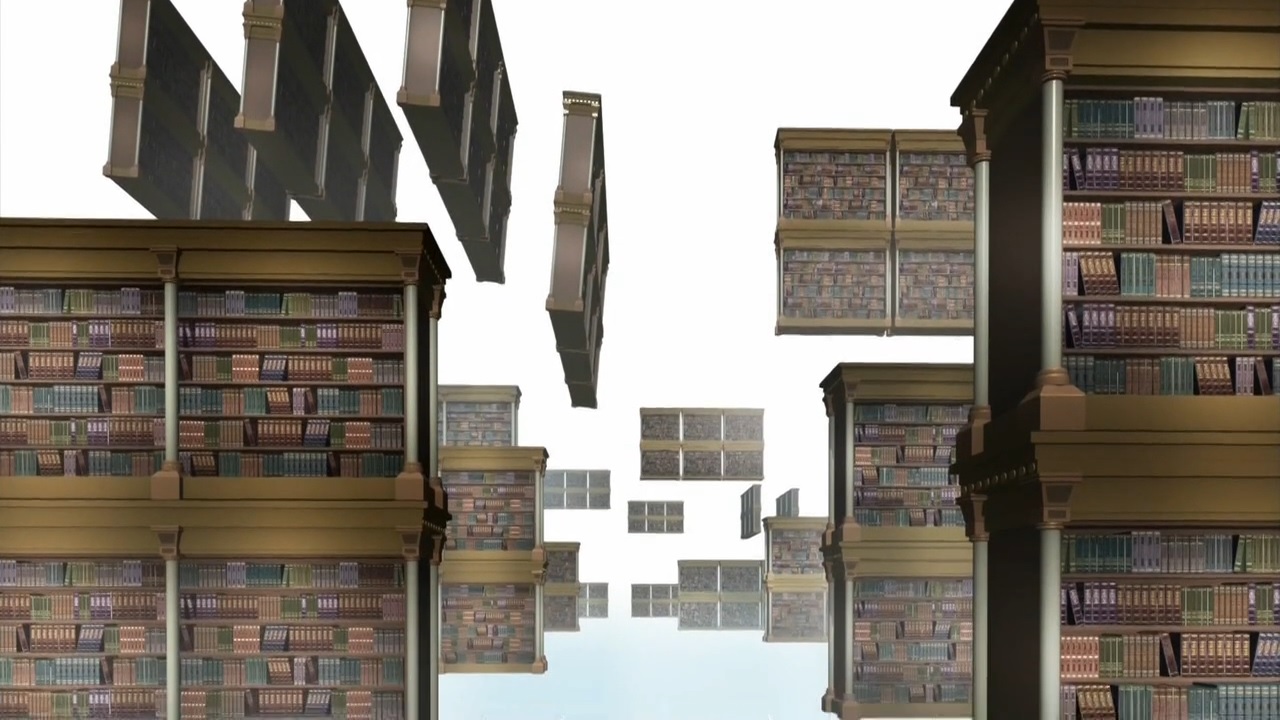
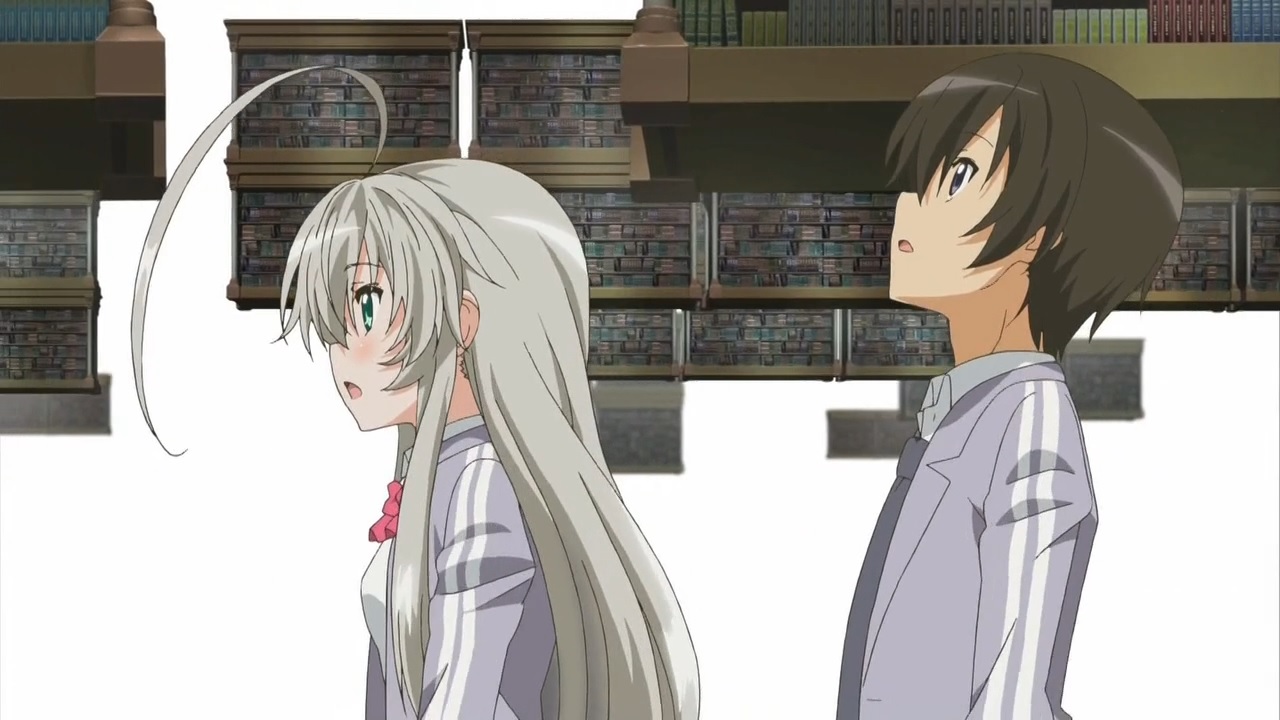
"The prohibited book vault: The Stellar Bookshelves" (9:17)
The Japanese line is "Kinsho Hokanko, Hoshi no Hondana desu ne" (禁書保管庫・星の本棚ですね). In addition, Nyaruko and company are in a nearly all white area with many floating book shelves. This is referencing "Kamen Rider W" (仮面ライダーW).S1 Philip (フィリップ), one of the main characters in "Kamen Rider W", has the ability to access "Hoshi no Hondana" (地球の本棚), "The Gaia Bookshelves". The term uses 「地球」 (chikyuu), the characters for "Earth", however the characters are read as 「ほし」 (hoshi). The Gaia Bookshelves are a vast collection of shelves of books contained within an all white alternate dimension. Image for reference:
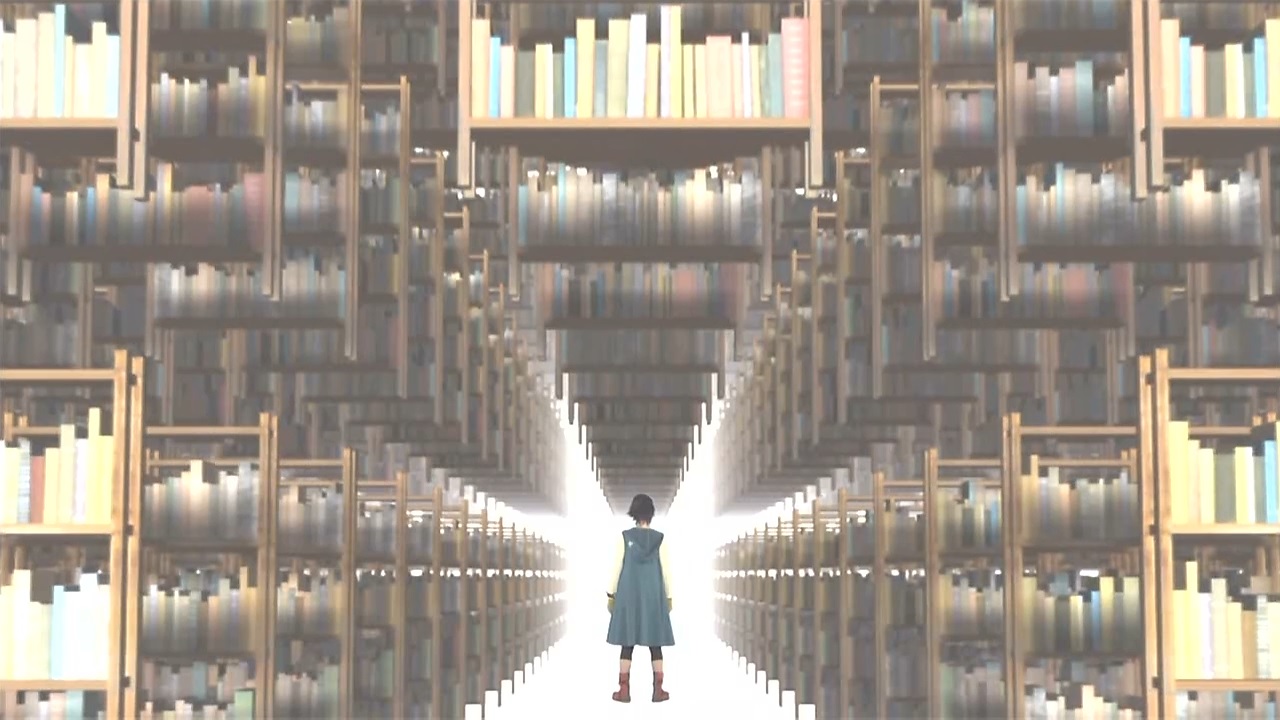
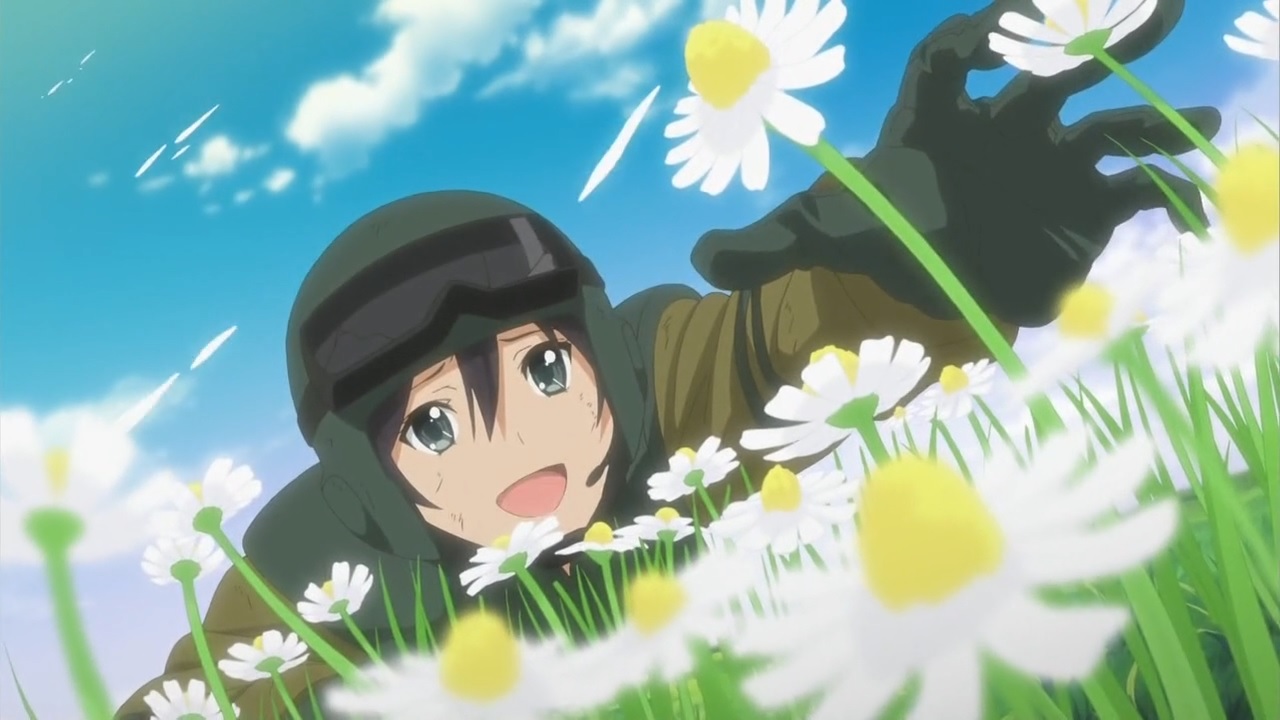
"So many... chamomile flowers." (9:35)
"Kamitsure no hana" (カミツレの花), "German Chamomile flower", appears in symbols related to the Library Squad Defense Force in "Toshokan Sensou" (図書館戦争).S1 Image for reference:
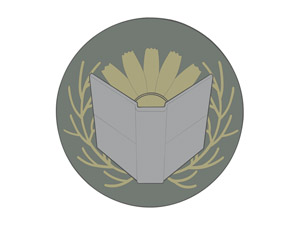
Source of image: http://blog.toshokan-sensou.com/2008/04/post-27.html
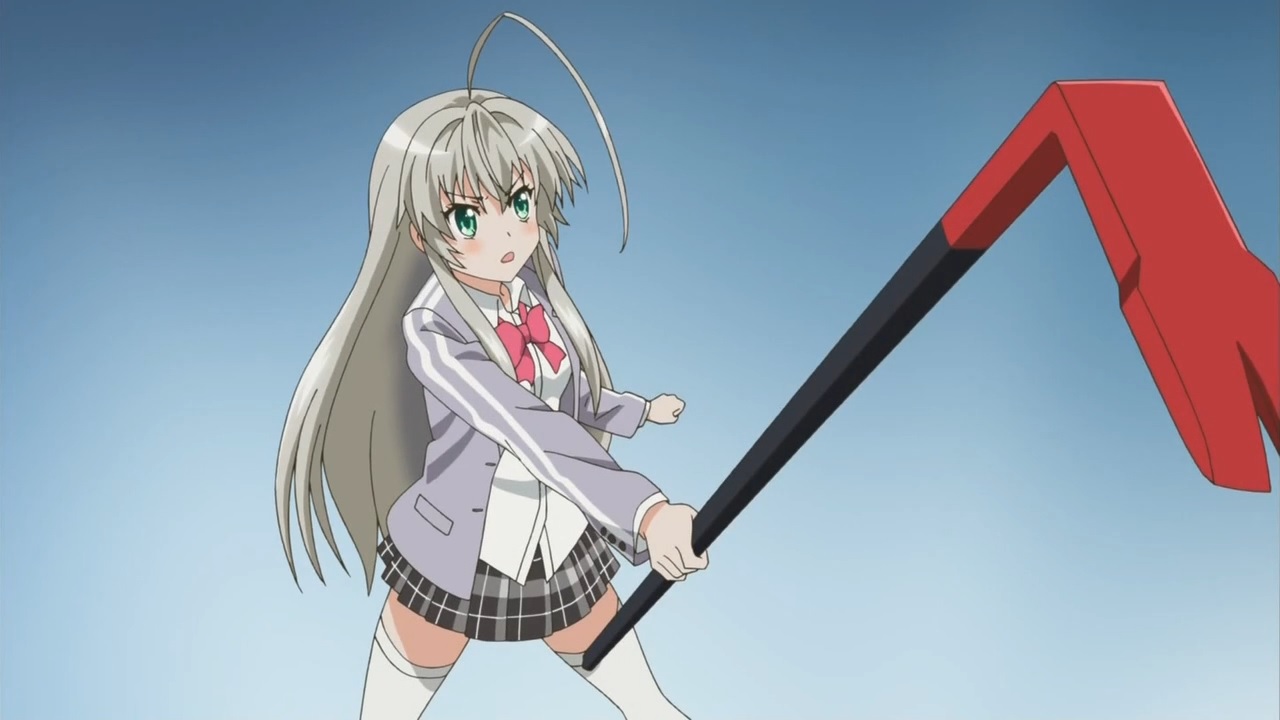
"From the start I'm at the climax!" (10:22)
The Japanese line is "Saisho kara kuraimakkusu desu!" (最初からクライマックスです!). This is referencing a catch phrase said by Momotarosu (モモタロス) in "Kamen Rider Den-O" (仮面ライダー電王), a Japanese TV show about a masked super hero that aired from 2007 to 2008. His line, with variations, goes "Ore ha saisho kara kuraimakkusu da ze!" (俺は最初からクライマックスだぜ!), which has the same meaning as above.
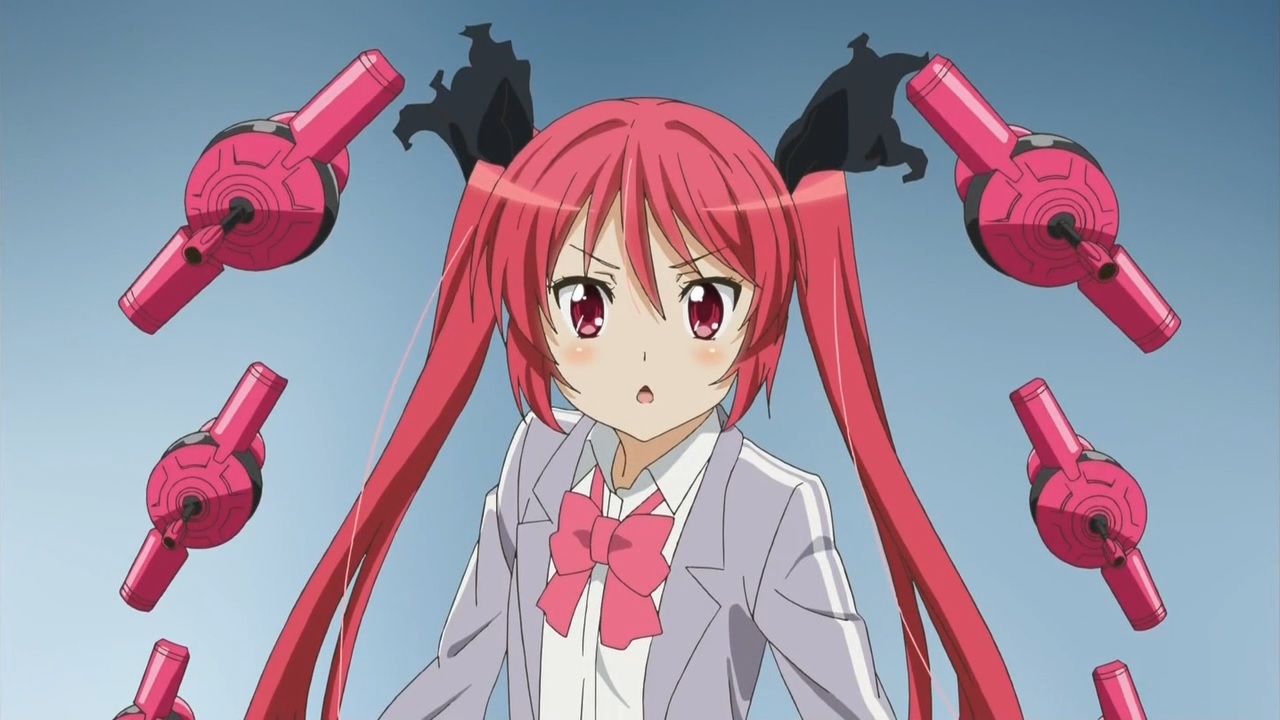
"I will decide your fate!" (10:26)
There are two references here:
* The Japanese line is "Anata no sadame ha, watashi ga kimeru" (あなたの運命は、私が決める). This is referencing the catch phrase of Kamen Rider Meteor (仮面ライダーメテオ) in "Kamen Rider Fourze" (仮面ライダーフォーゼ), a Japanese TV show about a masked super hero that aired from 2011 to 2012. His line goes, "Omae no sadame ha ore ga kimeru" (お前の運命は俺が決める), which has the same meaning as above.
* Cthuko's flying weapons that shoot lasers are based on funnels, remote controlled flying weapons that appear in various shows in the "Gundam" series. Video for reference: https://youtu.be/_bTvXsXvOMY?t=30s
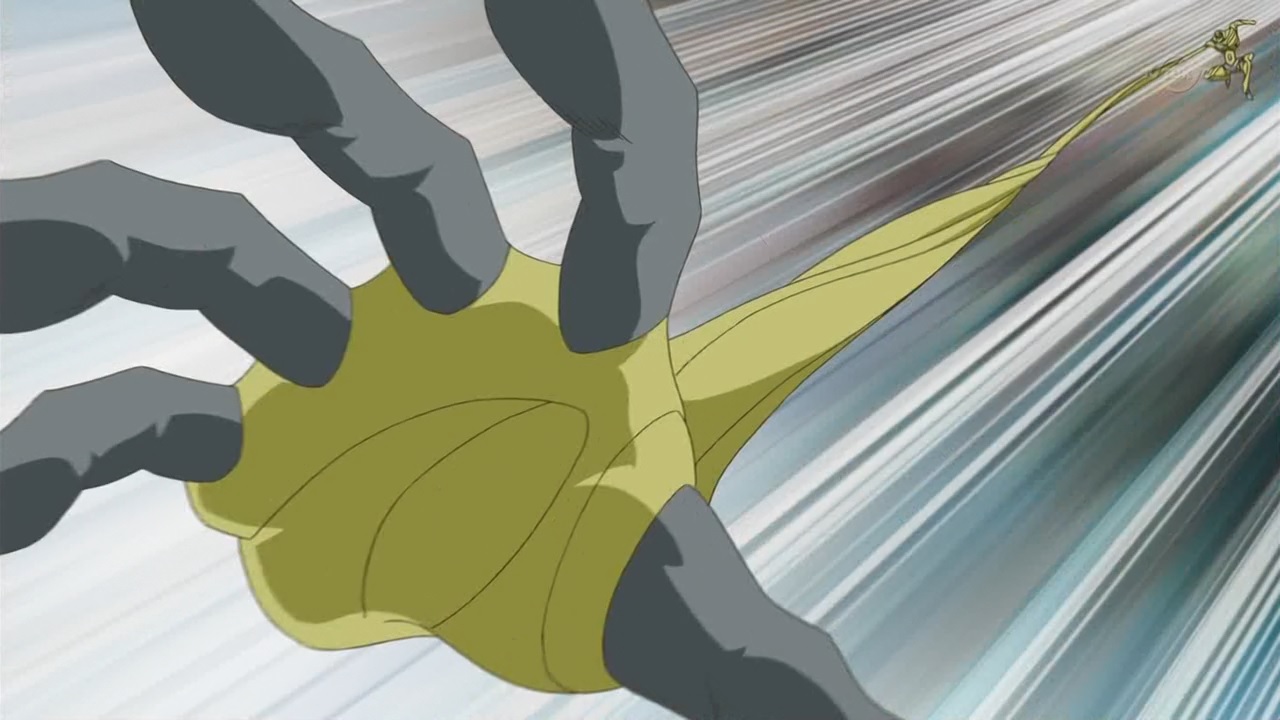
(10:48)
The yellow creature's ability to stretch its arm is referencing Kamen Rider W from "Kamen Rider W" (仮面ライダーW).S1 Kamen Rider W has the ability to change his form. One of his forms is called "LunaJoker", which grants him the ability to stretch his right arm and leg. Image for reference:
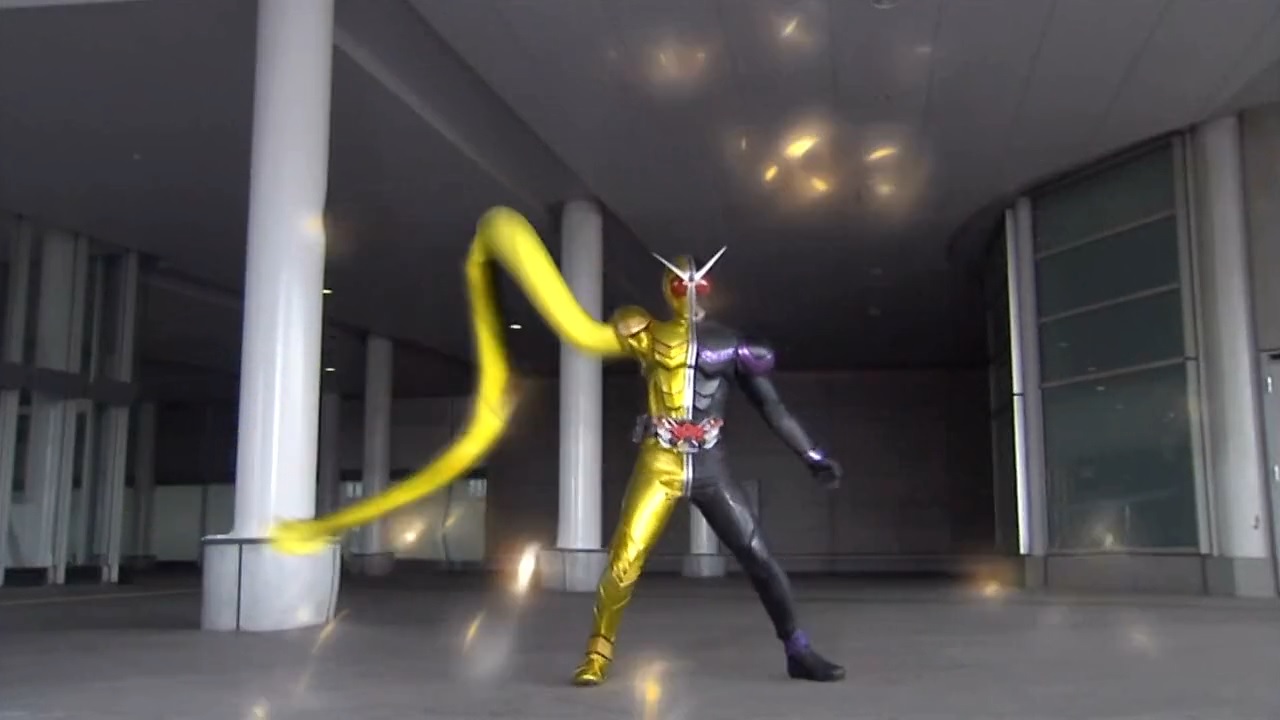
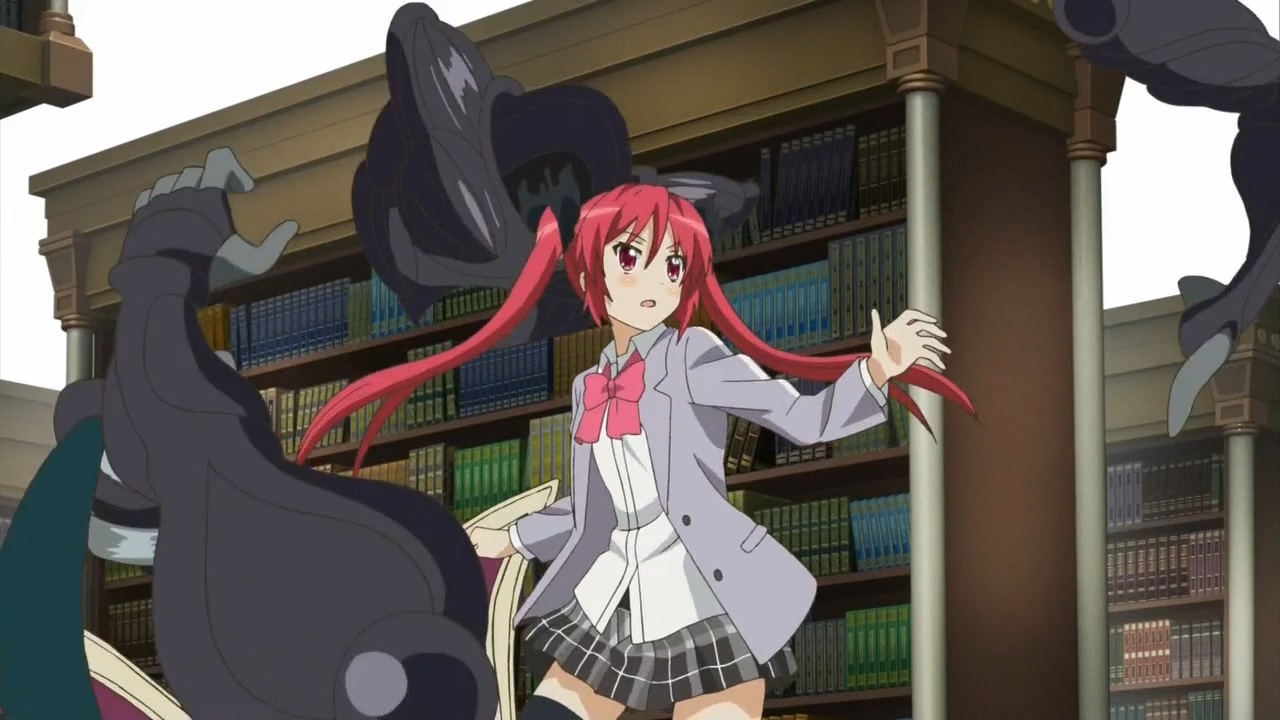
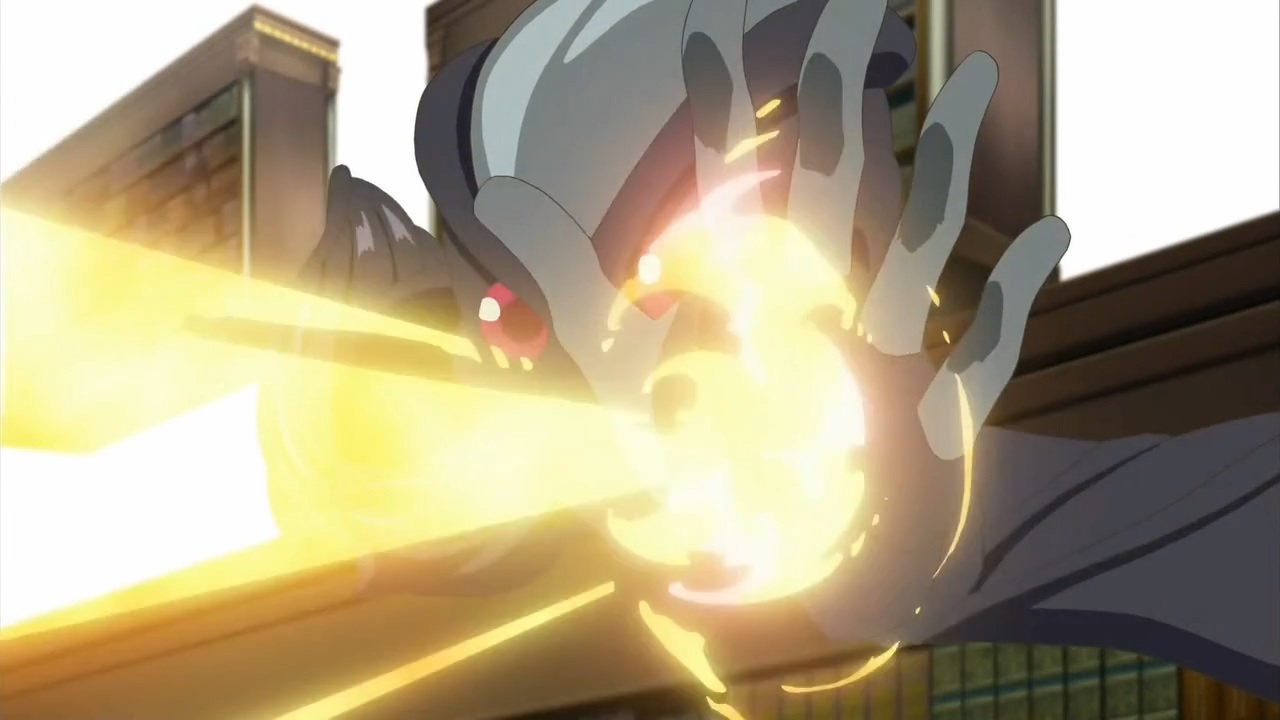
(11:12)
The black creature's ability to separate its body into parts and fire energy beams from its hands is referencing Turn X from "Turn A Gundam" (∀ガンダム), an anime series that aired from 1999 to 2000.S1 Turn X is a mobile suit that has the ability to separate into nine parts. Each part can be remotely controlled and each part contains a cannon capable of firing energy beams.
(11:34)
Hasta has the ability to control the wind. This is referencing how Hastur is stated to be one of "the Lords of Air" in "The Trail of Cthulhu", a book written by August Derleth and published in 1962.
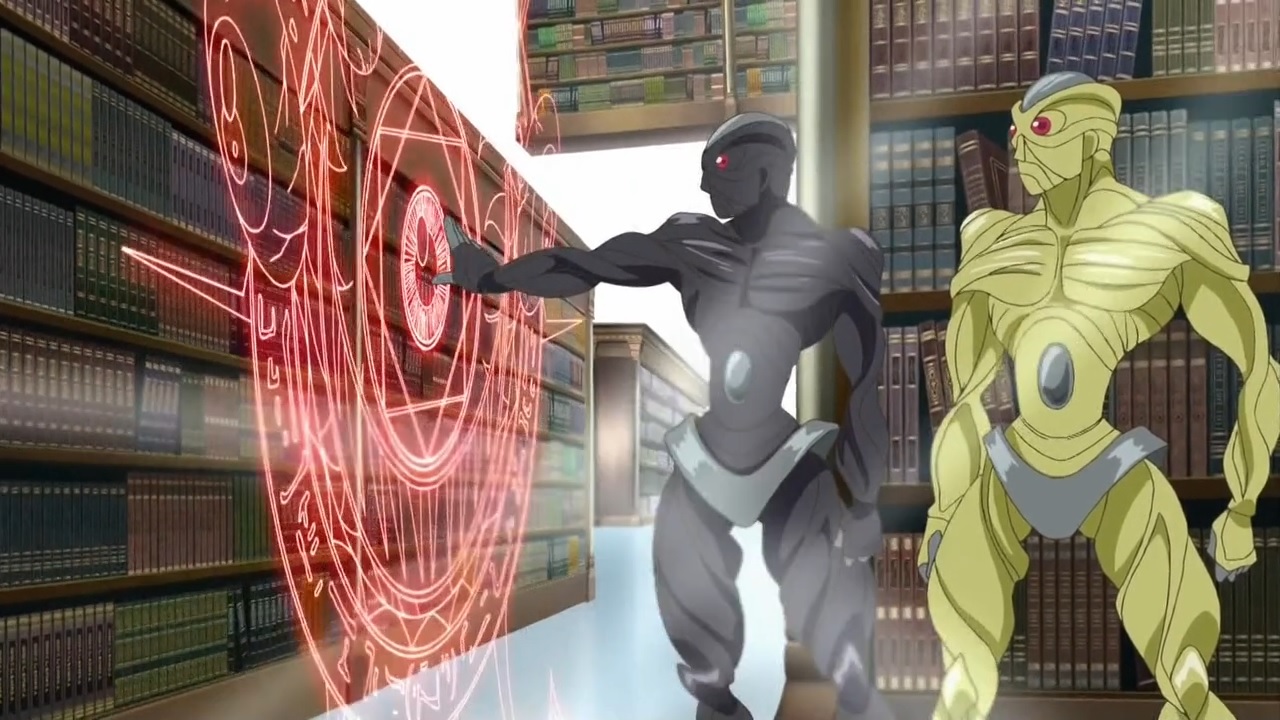
(12:13)
The magic circle used to warp is referencing Kamen Rider Wizard from "Kamen Rider Wizard" (仮面ライダーウィザード), a Japanese TV show about a masked super hero that aired from 2012 and is currently ongoing. One of Kamen Rider Wizard's abilities, "Connect" (コネクト), allows him to warp things to his location by using a magic circle. Images for reference:
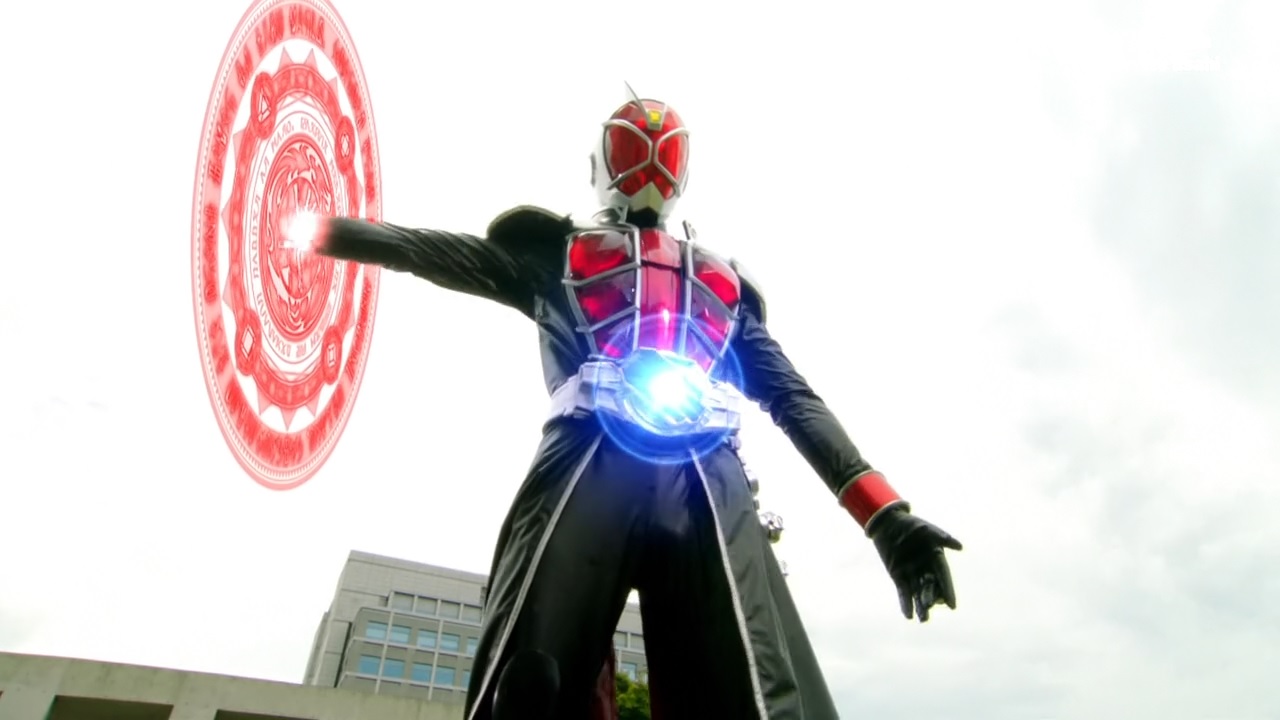
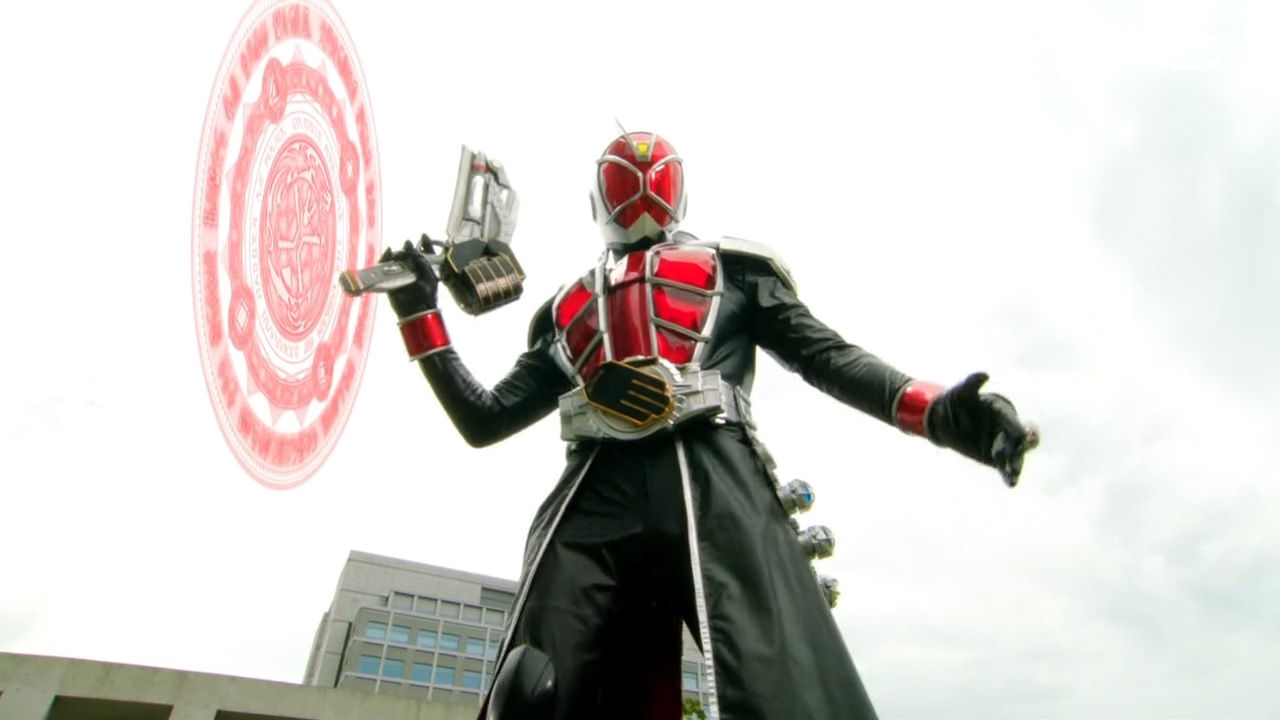
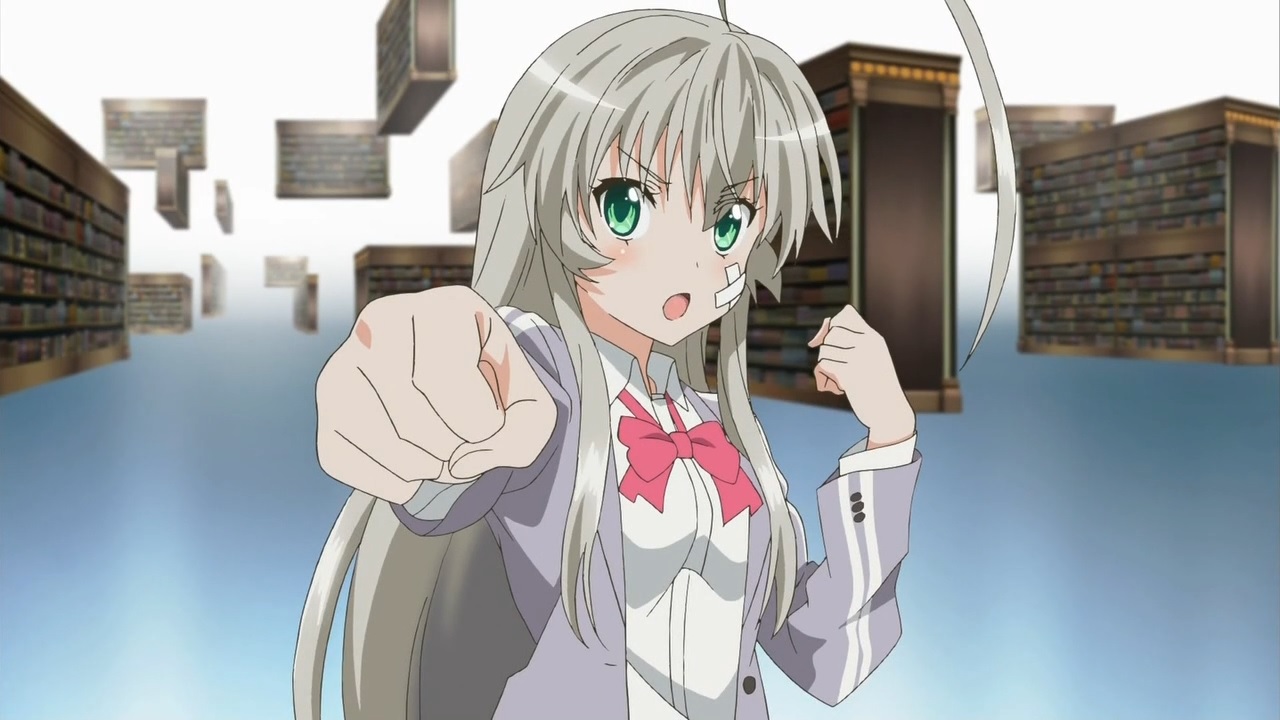
(12:43)
The line at this time goes as follows:
「勝利条件が本を傷つけないだったので、博打で手加減がかかったまでは良かったのですが、アタックが一になってしまうのをすっかり忘れてました。」This line is referencing "Suupaa Robotto Taisen" (スーパーロボット大戦), "Super Robot Wars", a video game series that first began release in 1991.S2
"Shouri jouken ga hon wo kizutsukenai datta no de, bakuchi de tekagen ga kakatta made ha yokatta no desu ga, atakku ga ichi ni natte shimau no wo sukkari wasuretemashita."
"The victory condition was I can't harm the books, so I took a Gamble and activated Mercy, which would have been fine, but I completely forgot that doing so sets my attack to 1."
* "Shouri jouken" (勝利条件), victory condition, is a recurring feature in the "Super Robot Wars" series.
* "Bakuchi" (博打), "gamble", is one of many Spirit Commands that appear in the "Super Robot Wars" series. Spirit Commands are power ups a player can use on characters to enhance their combat abilities. Gamble first appeared in "Mugen no Furontia Suupaa Robotto Taisen Oojii Saaga" (無限のフロンティア スーパーロボット大戦OGサーガ), "Endless Frontier Super Robot Wars OG Saga", released in 2008. Gamble has the effect of randomly selecting one of the player's Spirit Commands and activating it for one turn.
* "Tekagen" (手加減), "Mercy", is another Spirit Command. It first appeared in "Suupaa Robotto Taisen EX" (スーパーロボット大戦EX), "Super Robot Wars EX", released in 1994. Mercy normally has the effect of leaving an enemy with 10 HP if the user's next attack would normally destroy the enemy. However, in "Endless Frontier Super Robot Wars OG Saga", Mercy cannot be used normally. It can only be used if it is selected by Gamble. If Mercy is selected by Gamble, then the user's attack power is set to 1.
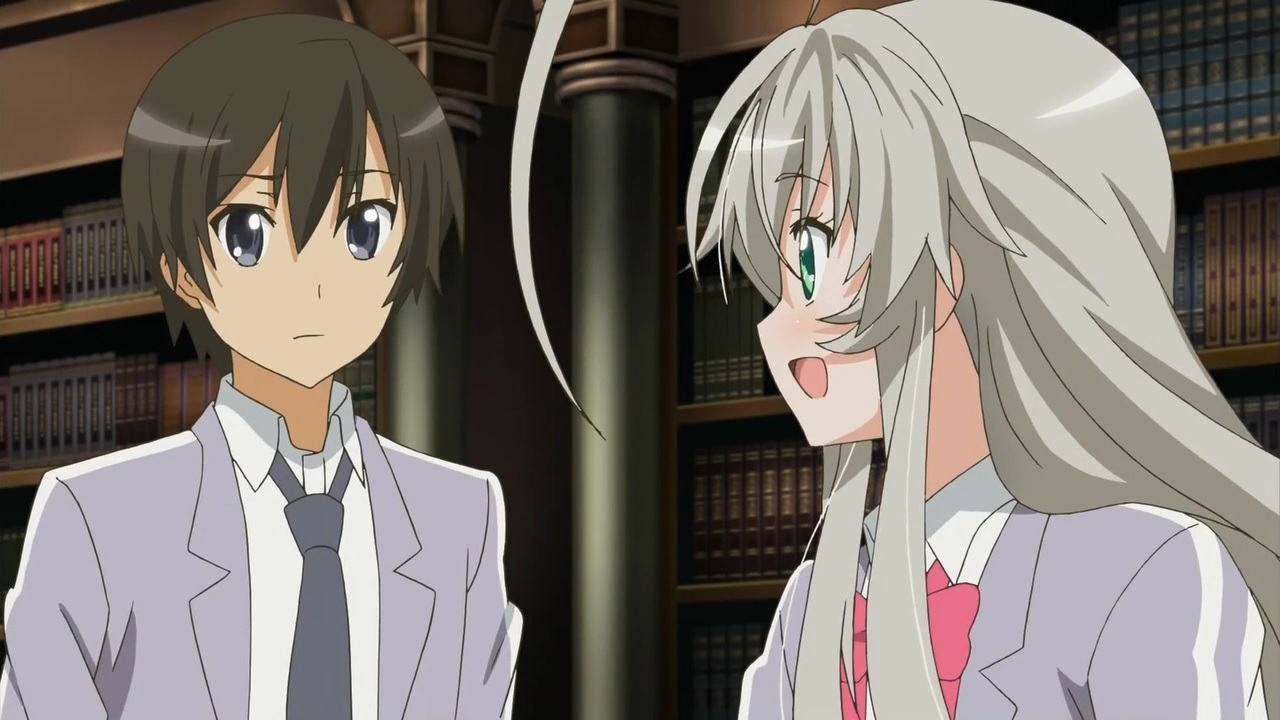
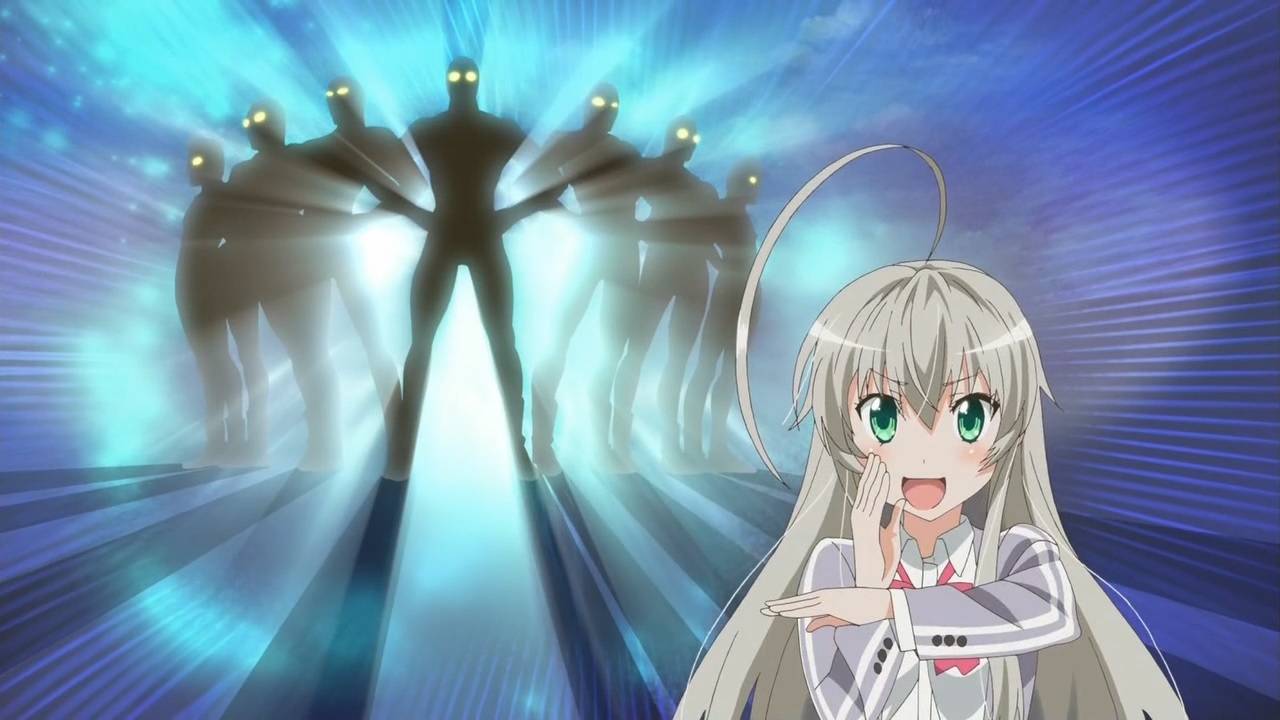
"Let's leave the rest to the Space Guard." (13:19)
"A team of elite warriors from the Land of Light" (13:23)
"Uchuu Keibitai" (宇宙警備隊), "Space Guard", and "Hikari no kuni no senshi" (光の国の戦士), "Warriors from the Land of Light", are referencing "Ultraman" (ウルトラマン), a Japanese TV show about a super hero from outer space that aired from 1966 to 1967.S1
* The main character, Ultraman, is a super hero who comes from "Hikari no Kuni" (光の国), "Land of Light", a planet that is located in Nebula M78.
* Ultraman is a member of "Uchuu Keibitai" (宇宙警備隊), "Space Guard", a peace keeping organization.
* The members of the Space Guard include other Ultra beings and they are known as "Urutora zoku no senshi tachi" (ウルトラ族の戦士達), "Warriors of the Ultra Family".
* The silhouetted figures in the background are referencing the Warriors of the Ultra Family.
* Nyaruko's pose is referencing "Supeshiumu Kousen" (スペシウム光線), "Spacium Ray", a special technique used by Ultraman. Image for reference:
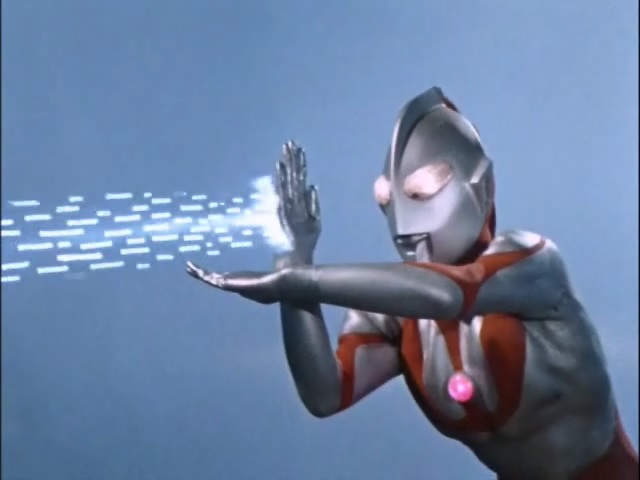
"Vierres!" (15:59)
Vierres (ビアレス) is a machine that appears in "Seisenshi Danbain" (聖戦士ダンバイン), "Aura Battler Dunbine", an anime series that aired from 1983 to 1984.S1
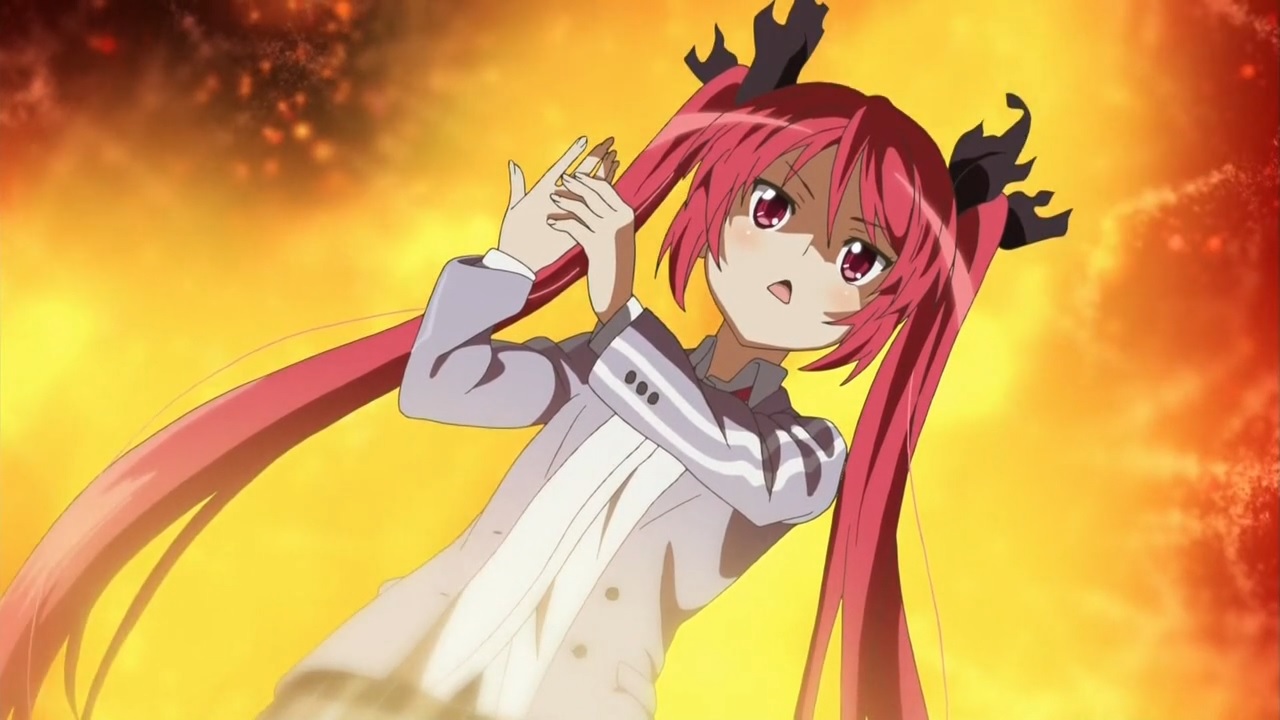
"Do you want me to perform the finale on you with the super great special best flame?" (16:10)
The Japanese line is "Chou ii supesharu no saikou no honoo de finaare saretai?" (超いいスペシャルの最高の炎でフィナーレされたい?). This is referencing several key terms in "Kamen Rider Wizard" (仮面ライダーウィザード).
* The phrases "chou ii" (超いい) and "saikou" (最高), "super great" and "the best", are referencing catch phrases that get announced when Kamen Rider Wizard activates one of his finishing attacks. In addition, the phrase "supesharu" (スペシャル), "special", is used when Kamen Rider Wizard activates his "Doragaon Buresu" (ドラゴンブレス), "Dragon Breath", finishing attack, such as in episode 9. The line goes, "Chou ii ne! Supesharu! Saikou!" (超いいね!スペシャル!最高!), which translates to "Super great! Special! The best!".
* The phrase "finaare" (フィナーレ), "finale", is referencing a line said by Kamen Rider Wizard when he is about to use one of his finishing techniques. His line goes, "Finaare da!" (フィナーレだ!), which translates to "It's the finale!".
* Cthuko's pose is of her putting an imaginary ring on her middle finger. This is referencing Kamen Rider Wizard, who is able to access different abilities by equipping different magical rings. Image for reference:
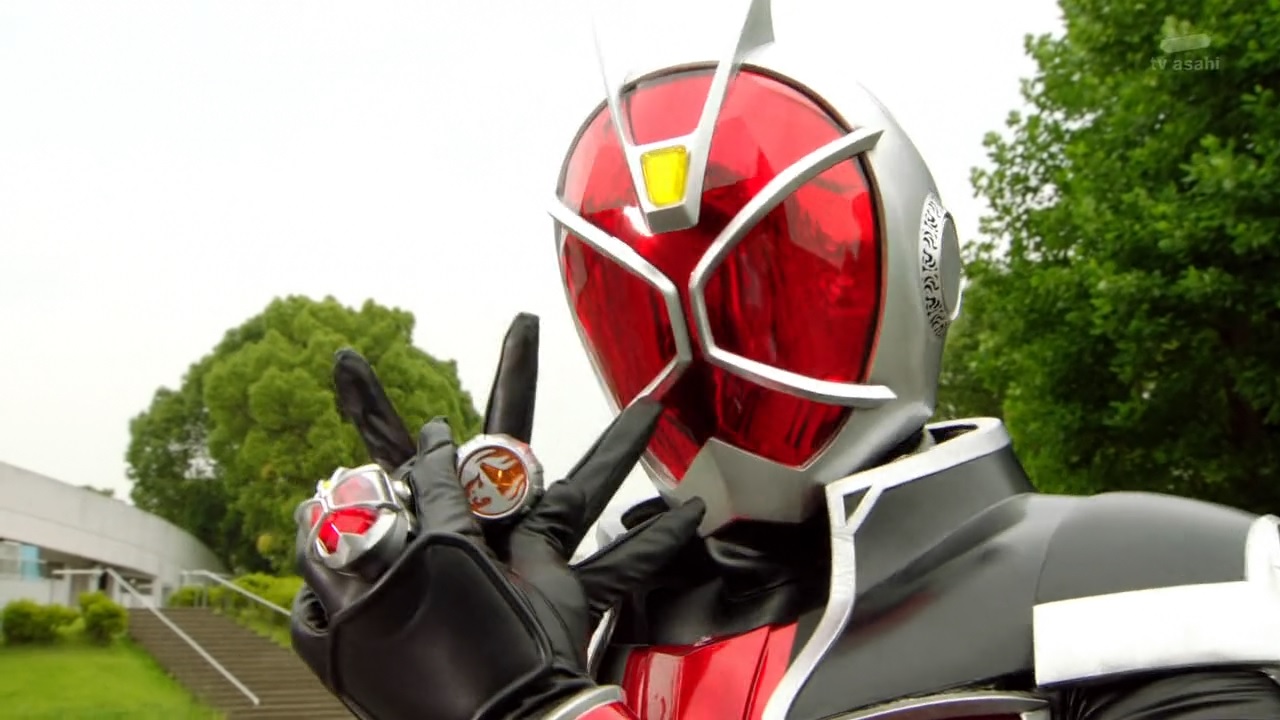
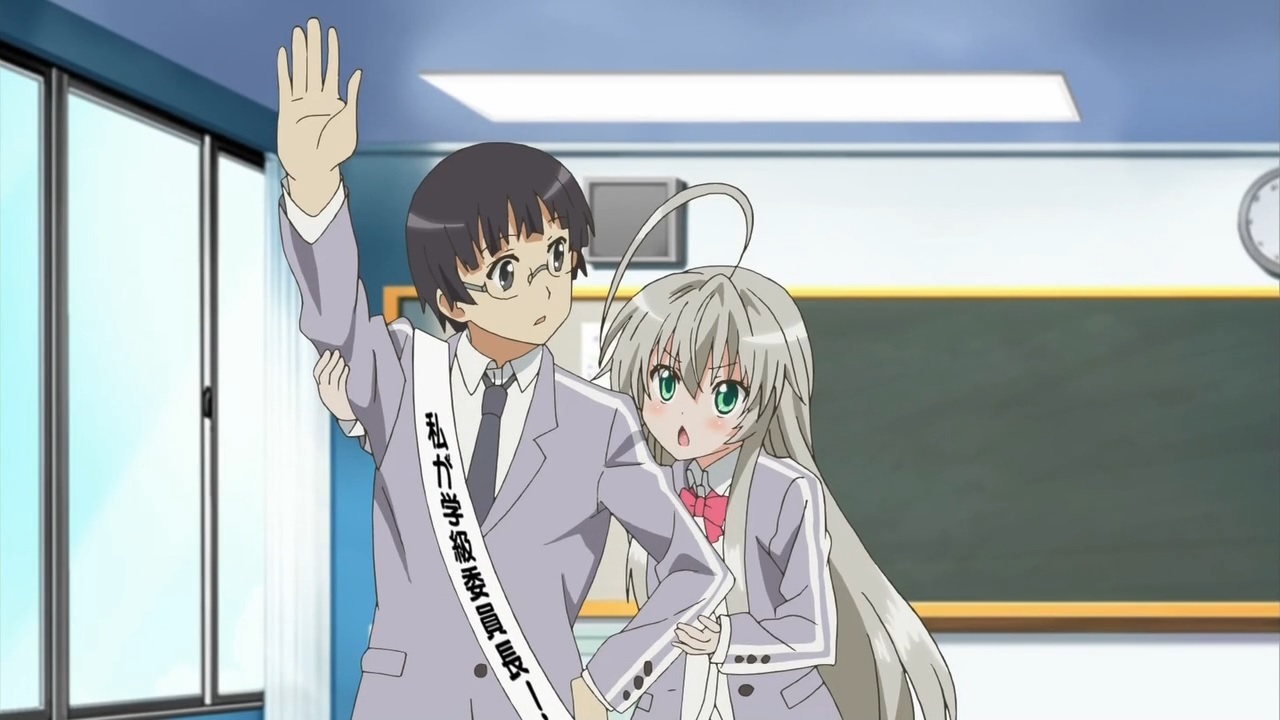
"I'd like to see you use the Class President's discretion" (16:33)
The Japanese line is "Iinchou no ichizon de" (委員長の一存で). This is referencing "Seitokai no Ichizon" (生徒会の一存), "The Student Council's Discretion", a light novel series written by Aoi Sekina (葵せきな) and published from 2008 to 2012.S1 In addition, here is the sash that Yoichi is wearing:
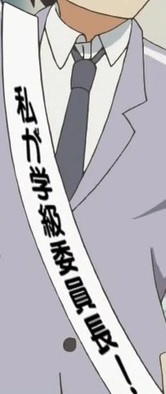
"Watashi ga Gakkyuu Iinchou!" (私が学級委員長!) is written on it, which translates to "I'm the Class President!". This is referencing Sakurano Kurimu, the student council president in "Seitokai no Ichizon".S1 Sakurano wears a sash that has the text "Watashi ga Seito Kaichou!!" (私が生徒会長!!) written on it, which translates to "I'm the Student Council President!!". Yoichi's pose with one hand on his hip and his other hand held out in front of him also resembles Sakurano's pose on the cover of the first volume of "Seitokai no Ichizon". Images for reference:
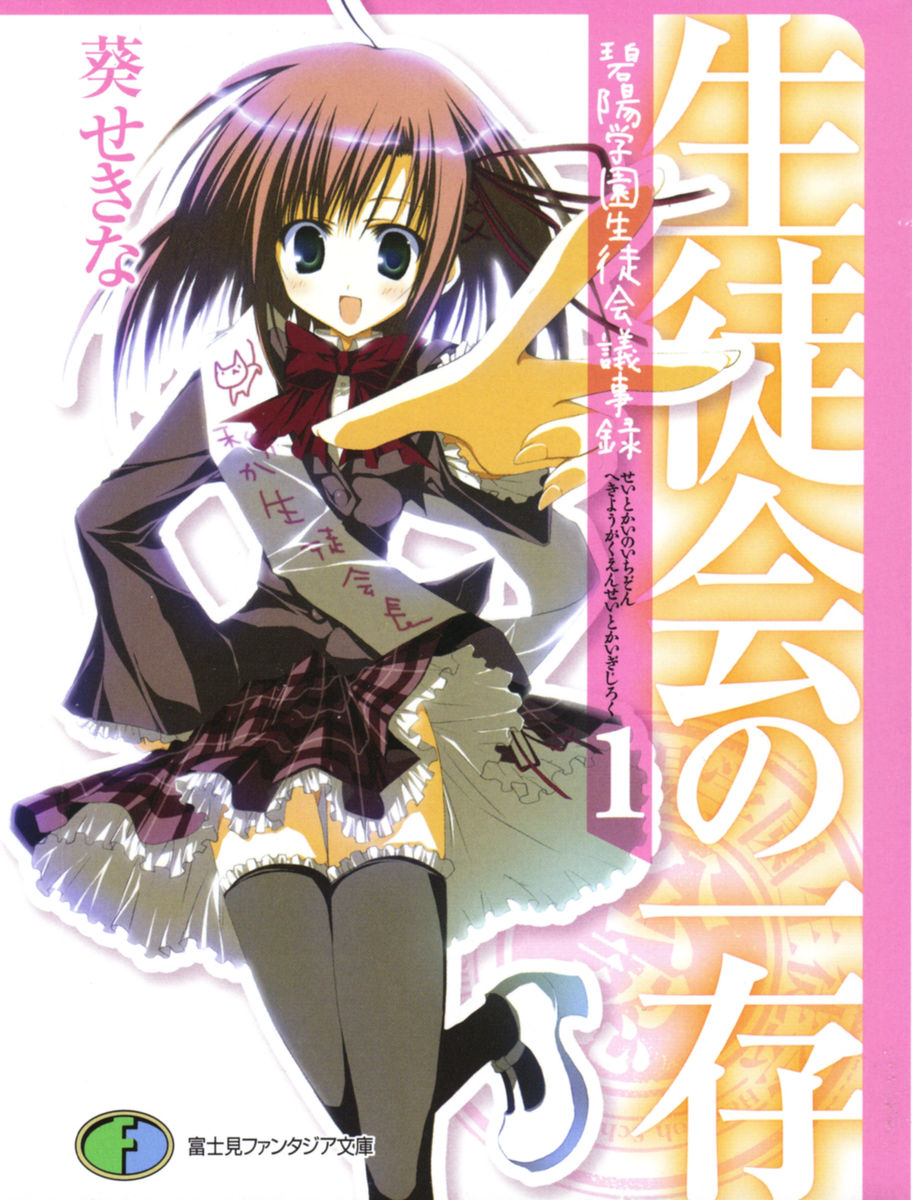
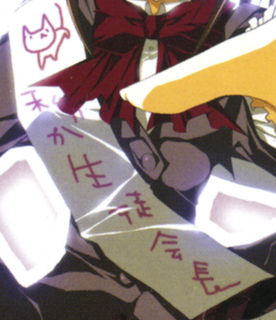
Yoichi's pose also resembles Sakurano's pose in a promotional image for the announcement of the second anime season of "Seitokai no Ichizon". Images for reference:

Source of image: http://kadokawa-anime.jp/seitokai/
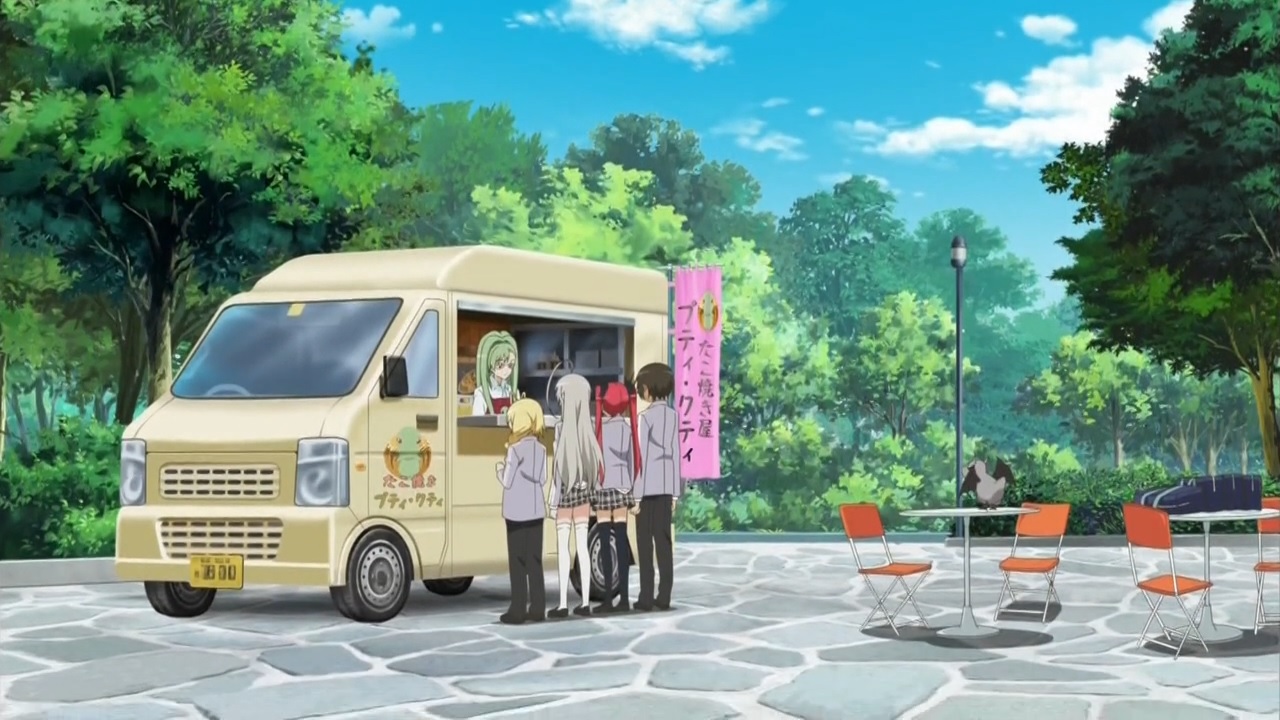
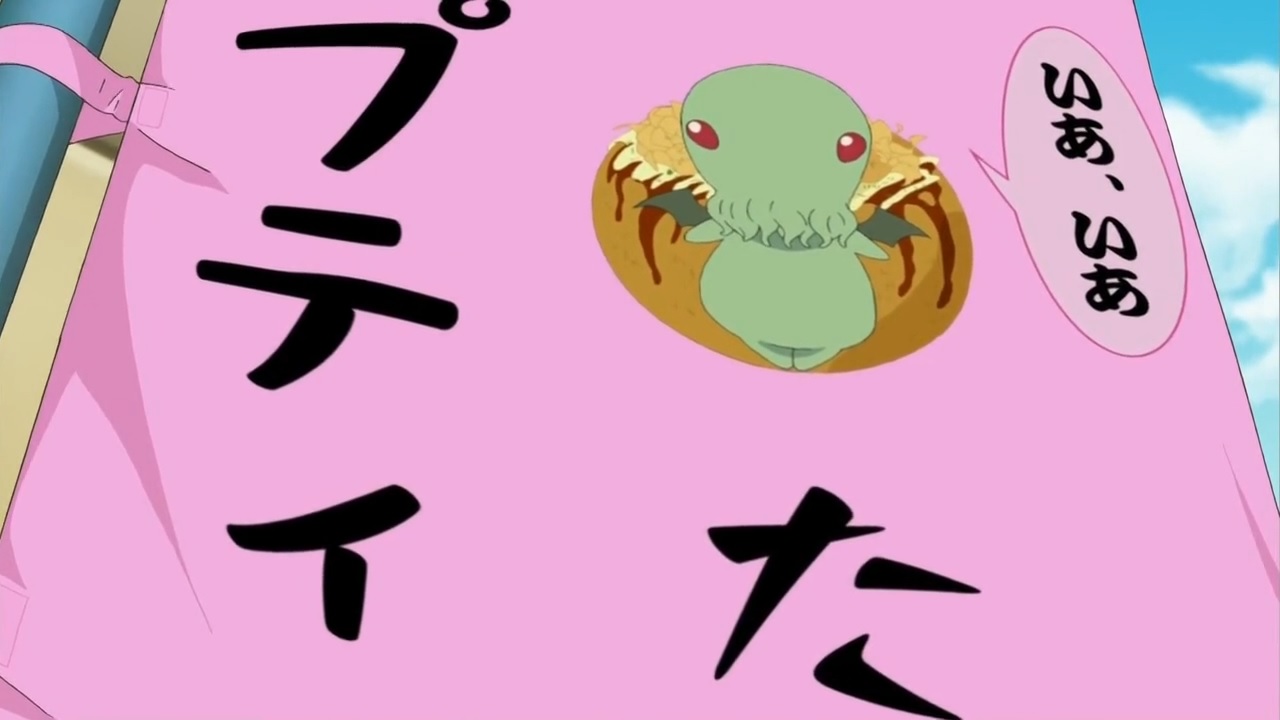
(16:48), (17:28)
There are three references here:
* The name of Luhy's restaurant is Puti Kuti (プティ・クティ). This is the name of the mascot character from "Moe Moe Kutouruu Shinwa Jiten" (萌え萌えクトゥルー神話事典), "Lovely Cthulhu Mythos Encyclopedia", a book published in 2009.
* The creature that appears on the sign is referencing Cthulhu from the Cthulhu Mythos. In particular, the depiction here is based on the appearance of Puti Kuti from the book mentioned above. Image for reference:
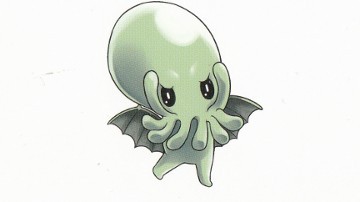
Source of image: http://f.hatena.ne.jp/servitors/20120524190732
* The Japanese text in the speech bubble on the sign reads "Ia, Ia" (いあ、いあ). "Iä" is a term that is used in the Cthulhu Mythos, often in relation to the fantastic creatures that appear in the mythos. In "The Shadow Over Innsmouth", a story written by H. P. Lovecraft and first published in 1936, a chant using the term goes as follows:
"Iä! Iä! Cthulhu fhtagn! Ph’nglui mglw’nafh Cthulhu R’lyeh wgah-nagl fhtagn"
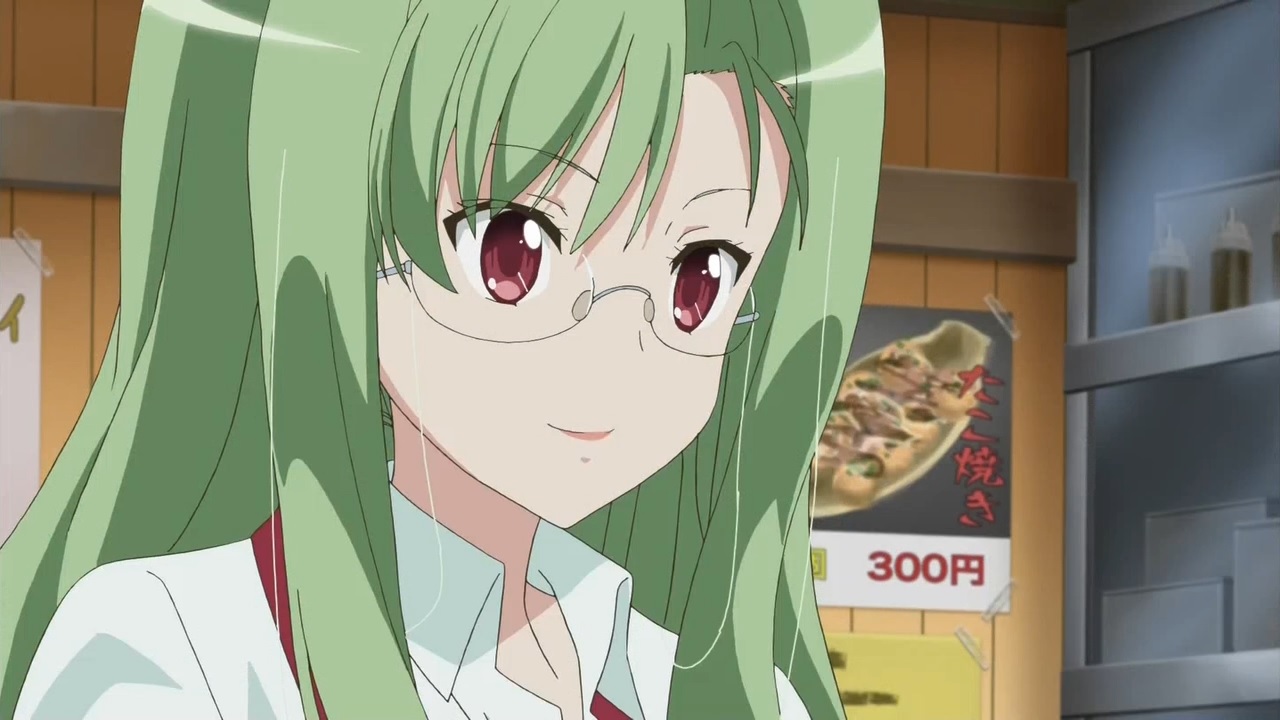
(16:51)
This is Luhy Jistone (ルーヒー・ジストーン Ruuhii Jisutoon), who was first introduced in episode 5 of season 1. The name Luhy (ルーヒー Ruuhii) derives from Cthulhi (クトゥルヒ Kutouruhi), a species of creature in the Cthulhu Mythos. They are the spawn and servants of Cthulhu and are of similar physical appearance to Cthulhu, but they are much smaller in size. They are mentioned, though not by the term Cthulhi, in "At the Mountains of Madness", a story written by H. P. Lovecraft and first published in 1936. The term Cthulhi is used to describe the spawn of Cthulhu in "The Transition of Titus Crow", a story written by Brian Lumley and first published in 1975. Luhy is based on Cthulhu and previously worked at the Cthulhu Corporation before being fired.
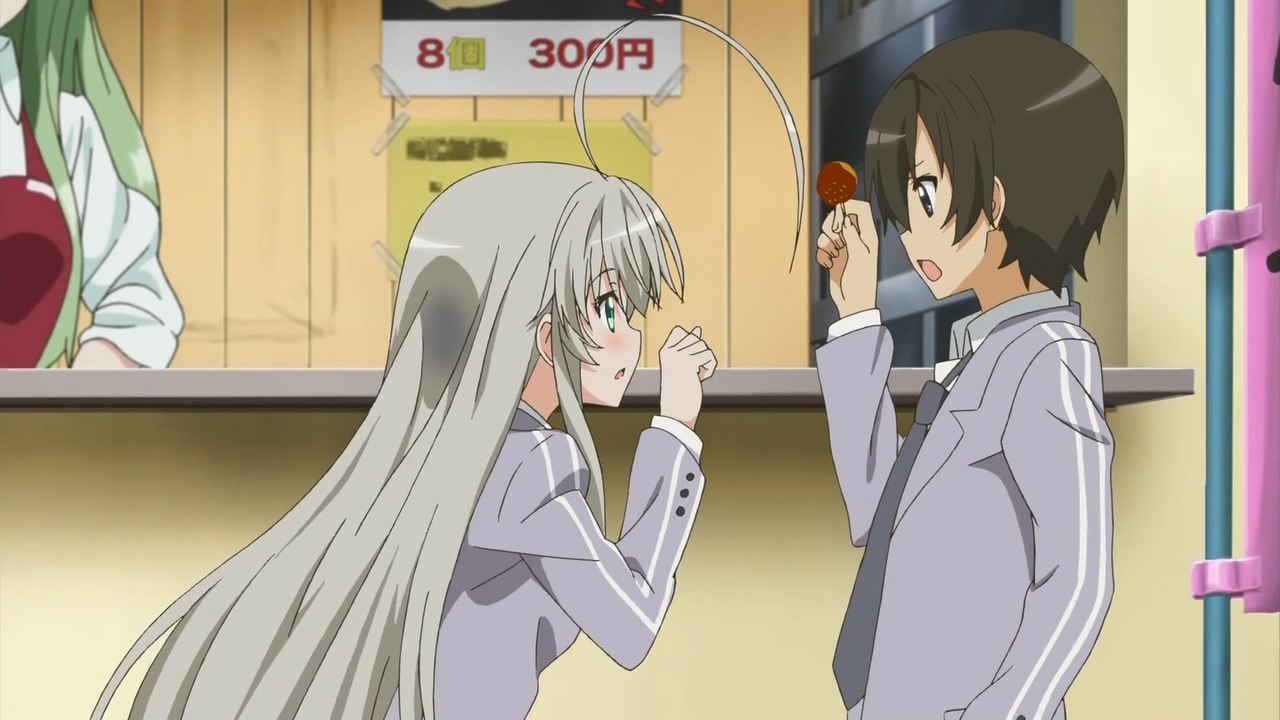
"Do you really want to lower my sanity points that much?" (17:38)
"SAN chi" (SAN値), "sanity points", is a parameter that characters have in the "Call of Cthulhu" role playing game. If a character's sanity points drop to zero, the character is permanently insane and normally can no longer be played.
"My first 'Ah' tastes like tears." (17:44)
The Japanese line is "Hajimete no 'an' ha namida no aji ga shimasu" (初めての「あん」は涙の味がします). This appears to be referencing a line in the lyrics to "Hajimete no Koi ga Owaru Toki" (初めての恋が終わる時), "When First Love Ends", a song written by ryo of the band supercell, sung by Hatsune Miku (初音ミク), and released in 2008. The original line goes, "Hajimete no kisu ha namida no aji ga shita" (はじめてのキスは涙の味がした), which translates to "My first kiss tasted like tears".
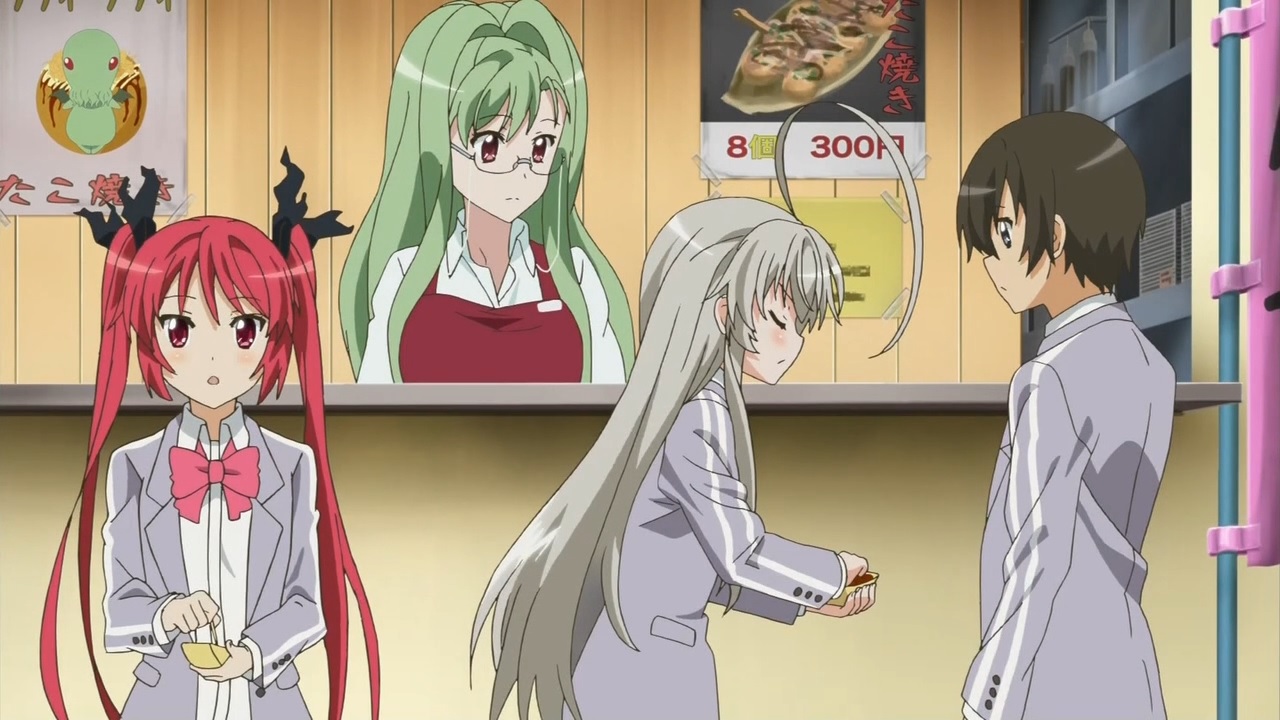
"Our trouble is always darkness." (18:09)
The Japanese line is "Watashi tachi no toraburu ha itsumo daakunesu" (私たちのトラブルはいつもダークネス). This is referencing "To Loveる ダークネス" (To Rabu Ru Daakunesu), "To Love Ru Darkness", a manga series written by Hasemi Saki (長谷見沙貴) and published from 2010 and is currently on going. The title "To Love Ru" is pronounced as "toraburu" (とらぶる), which is a pun on the Japanese pronunciation of the English word "trouble". An anime adaptation of "To Love Ru Darkness" aired in 2012 and was animated by Xebec (ジーベック), the same studio that animated "Haiyore! Nyaruko-san" and is currently animating "Haiyore! Nyaruko-san W".
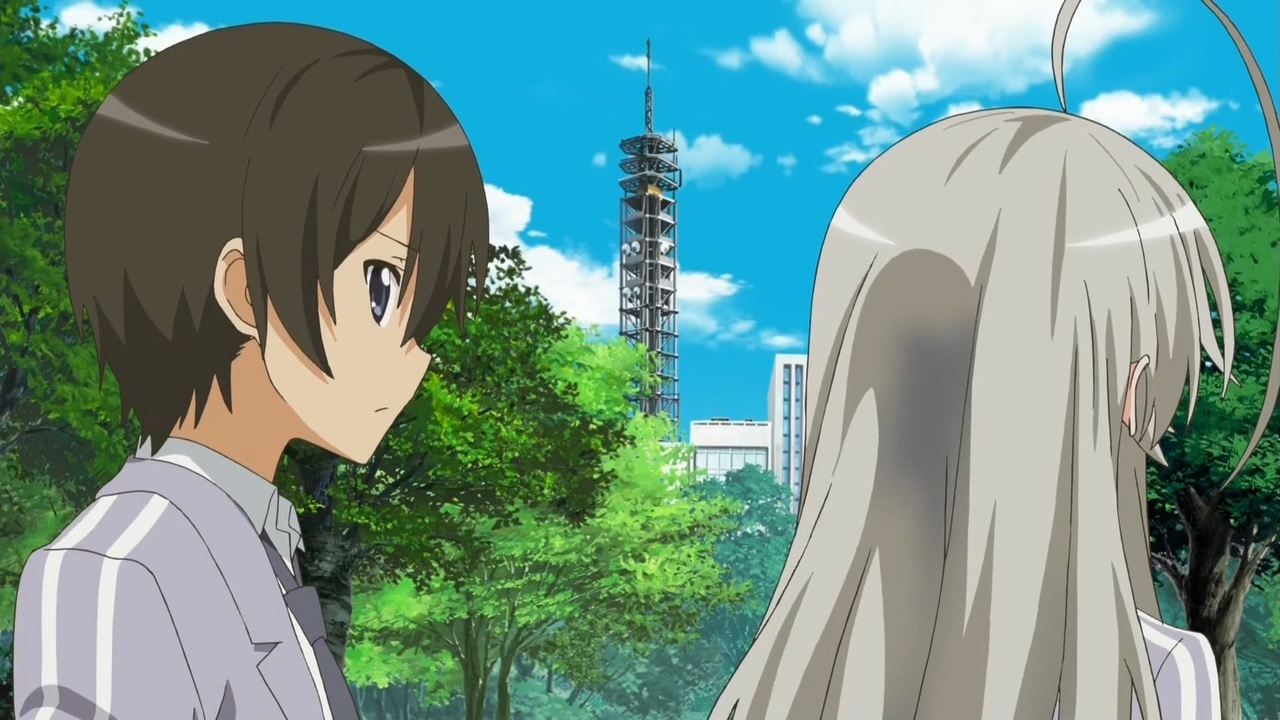
(18:14)
The tower in the background is based on the West Tokyo Sky Tower (西東京スカイタワー), also known as Tanashi Tower (田無タワー). Image for reference:
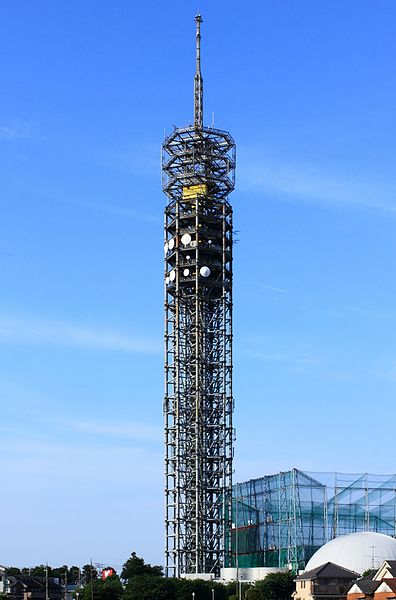
Source of image: https://ja.wikipedia.org/wiki/ファイル:SkyTower_NishiTokyo.JPG

"It was a Zharian and a Lloigorian" (18:17)
* "Tsaaru seijin" (ツァール星人), "Zharian", is referencing Zhar, a creature classified as a Great Old One in the Cthulhu Mythos.
* "Roigaa seijin" (ロイガー星人), "Lloigorian", is referencing Lloigor, a creature classified as a Great Old One in the Cthulhu Mythos.
* Zhar and Lloigor first appeared in "The Lair of the Star-Spawn", a short story written by August Derleth and Mark Schorer and first published in 1932. In the story, Zhar and Lloigor are collectively called "the twin Obscenities".
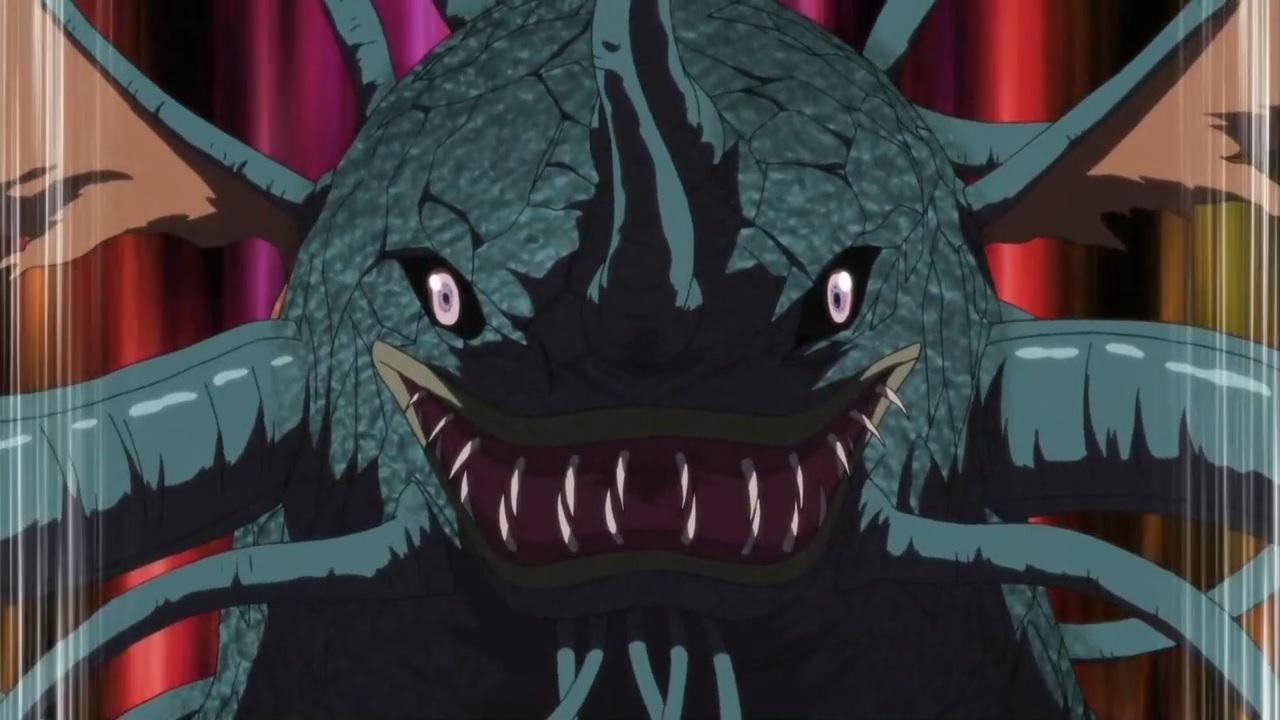
(18:25)
The Lloigor that appears here originally appeared in episodes 11 and 12 of the first season of "Haiyore! Nyaruko-san". It belongs to a species of creature in the Cthulhu Mythos called Lloigor. This species has the same name as the Great Old One mentioned before, but other than this they are unrelated. The appearance of the Lloigor appears to be based on a depiction of Lloigor on the cover of the Japanese publication of "The Return of the Lloigor", a short story written by Colin Wilson and first published in 1969. It was then published in Japanese in 1977 and titled "Roigaa no Fukkatsu" (ロイガーの復活), which translates to "The Resurrection of the Lloigor". Cover image for reference:
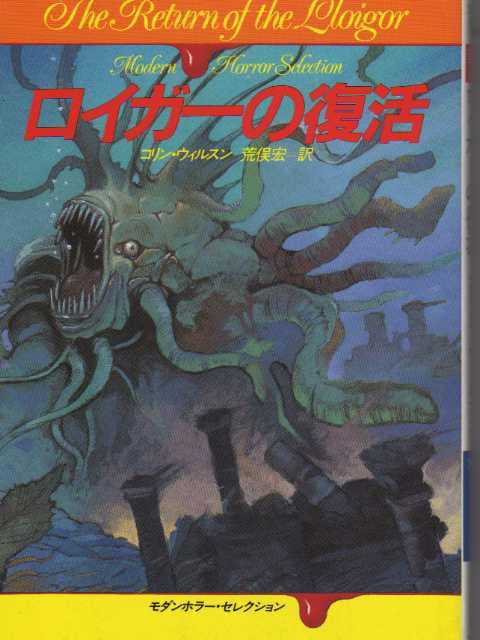
Source of image: http://bookshelf.co.jp/product_info.php/products_id/58484
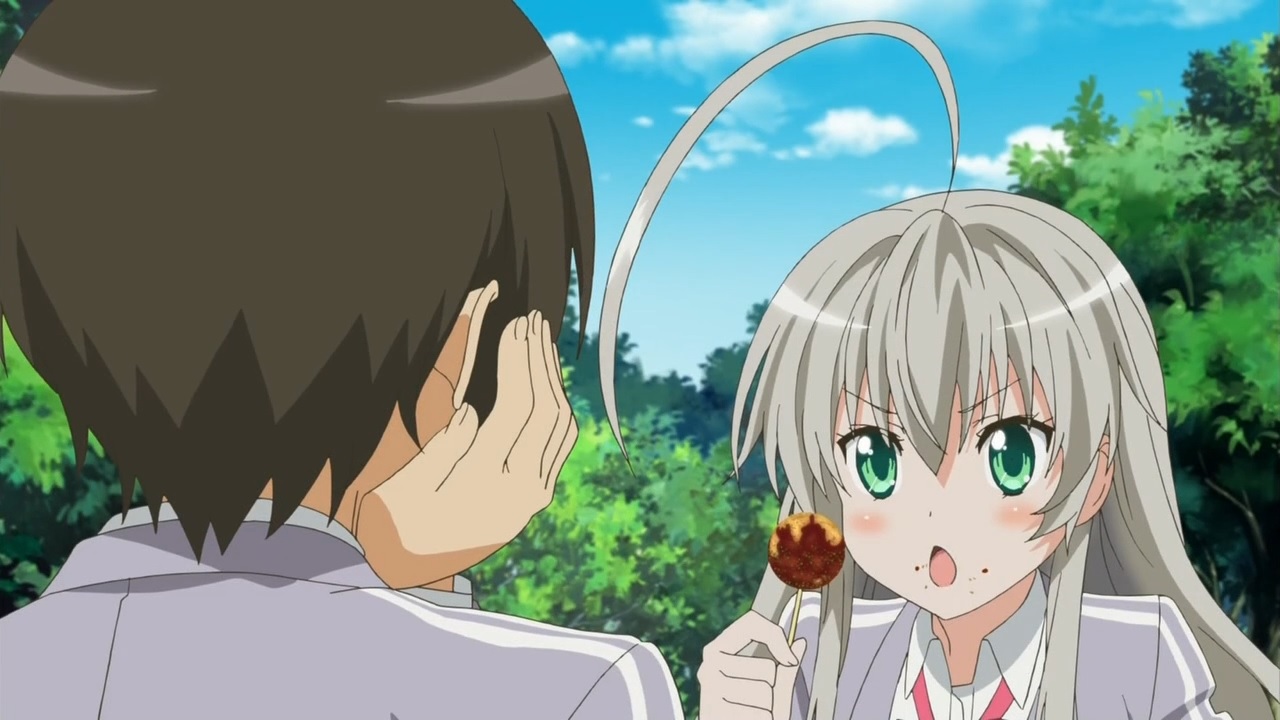
"Well, apparently rebels have appeared in the Land of Light, which is the location of the Space Guard headquarters." (18:39)
This is referencing Ultraman Belial (ウルトラマンベリアル) from "Dai Kaijuu Batoru Urutora Ginga Densetsu THE MOVIE" (大怪獣バトル ウルトラ銀河伝説 THE MOVIE), "Mega Monster Battle Ultra Galaxy Legend THE MOVIE", a Japanese movie that was released in 2009.S2 In the movie, Ultraman Belial used to be a Warrior in the Space Guard, however he was corrupted by greed and pride, and he turned evil in his pursuit of power. As a result, he was banished from the Land of Light. After his banishment, Belial leads an attack on the Land of Light in an event known as "Beriaru no Ran" (ベリアルの乱), "The Rebellion of Belial".
"Gallaba!" (19:49)
Gallaba (ガラバ) is a machine that appears in "Seisenshi Danbain" (聖戦士ダンバイン), "Aura Battler Dunbine".S1
"The satellite that monitors Earth, 'The Champion of Love'" (20:03)
"Ai no Chanpion Gou" (愛のチャンピオン号), "Champion of Love", is the title of an audio track released by Snakeman Show (スネークマンショー) in 1981.S1
"It seems they landed in Myanmar." (20:11)
Myanmar is a country in Southeast Asia that was formerly known as Burma. In "The Lair of the Star-Spawn", a short story written by August Derleth and Mark Schorer and first published in 1932, it is stated that Lloigor and Zhar dwell beneath the Plateau of Sung in Burma.
"Leprechaun!" (20:35)
Leprechaun (レプラカーン) is a machine that appears in "Seisenshi Danbain" (聖戦士ダンバイン), "Aura Battler Dunbine".S1
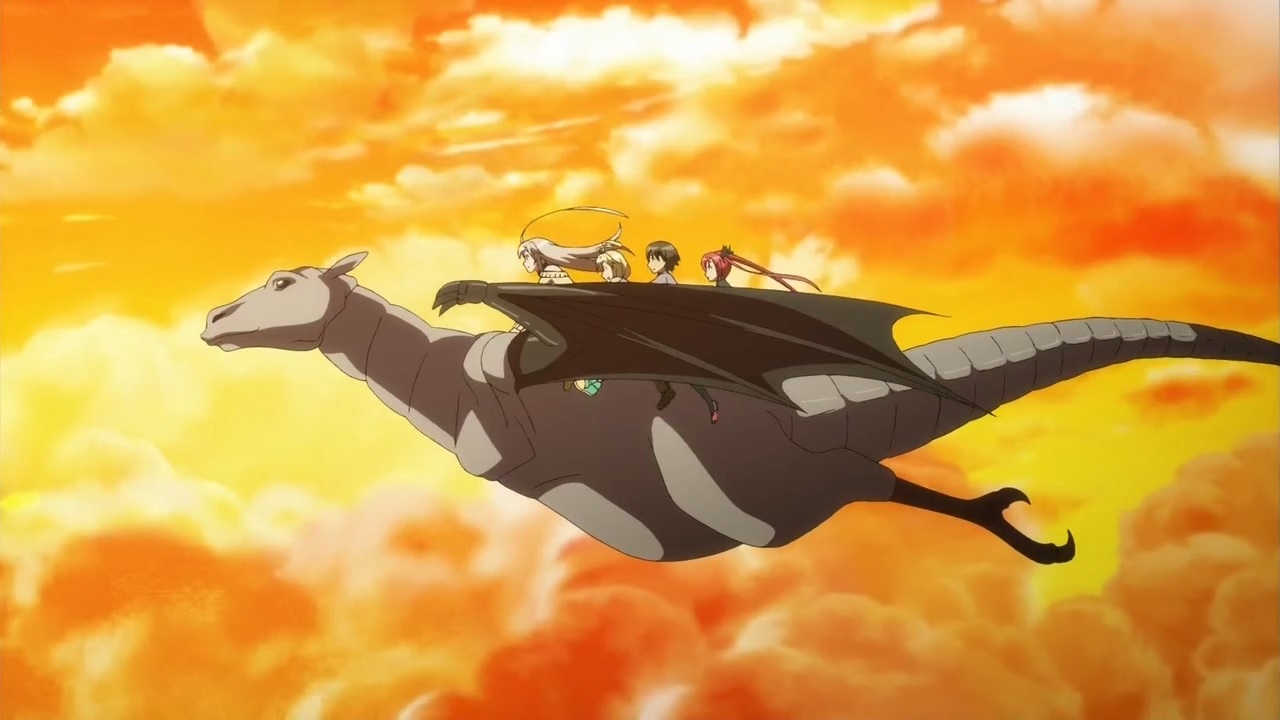
(20:39)
This is referencing how in "The Dream-Quest of Unknown Kadath", a story written by H. P. Lovecraft and published in 1943, Shantaks are used for transportation.
"You should be more aware of the support effect you provide to your surrounding hexagons." (20:59)
"When you're near me, my accuracy and evasion rate are increased by 100 percent." (21:06)
The phrase "shien kouka" (支援効果), "support effect", and Cthuko's line are referencing a recurring game mechanic in "Fire Emblem" (ファイアーエムブレム), a series of video games developed by Intelligent Systems (インテリジェントシステムズ) and published by Nintendo (任天堂) starting from 1990.S2 In "Fire Emblem: Mystery of the Emblem" (ファイアーエムブレム 紋章の謎), released in 1994, battles take place on a grid with each character occupying a square, and a character can grant a support effect by being within 3 squares distance of the character they support. The support effect includes a boost to accuracy, avoid, and critical hit rate. Since this game, similar mechanics have appeared in other games in the series.
"The Isle of Stars within the Lake of Dread. This is the ancient city of Alaozar." (22:06)
In "The Lair of the Star-Spawn", a short story written by August Derleth and Mark Schorer and first published in 1932, the city of Alaozar is described as "the long-lost city on the Isle of the Stars in the Lake of Dread."
"Next week's episode of Nyaruko W is..." (24:11)
The Japanese line is "Saate, raishuu no Nyaruko-san W ha" (さぁて、来週のニャル子さんWは). This is referencing a line from the next episode preview for the anime adaptation of "Sazae-san" (サザエさん), originally a manga series written by Hasegawa Machiko (長谷川町子) and published from 1946 to 1974. It was adapted into an anime series in 1969 and is currently ongoing. The original line is "Saate, jikai no Sazae-san ha?" (さ~て、次回のサザエさんは?), which translates to "Well then, the next episode of Sazae-san is?".
"Glittering sparkling, rock paper-" (24:22)
Nyaruko was about to say "Pikapika pikarin, jan ken pon!" (ピカピカぴかりん、じゃんけんポン!), which translates to "Glittering sparkling, rock paper scissors!". This is the catch phrase said by Kise Yayoi (黄瀬やよい) after she transforms into Cure Peace (キュアピース) in "SMILE PRECURE!" (スマイルプリキュア!), an anime series that aired from 2012 to 2013.S1
List of Sources:
S1. Comments on this post
S2. A post at Steman Blog (ステマブログ)
S3. A blog by servitors about Cthulhu Mythos inspired works (クトゥルー/クトゥルフ神話作品発掘記)
Thanks to everyone who contributed! This list wouldn't be nearly as long without you all. See you next episode!
情報を教えてくださって本当にありがとうございました!皆さんがいなかったら、このリストはぜんぜん長くありません。またこの次までね!
Last updated November 29, 2021
Sitemap
Home
